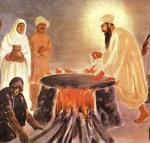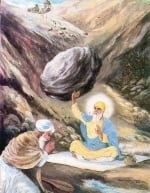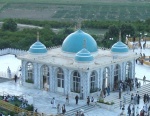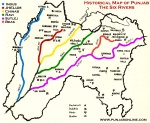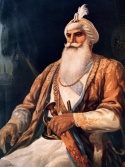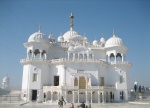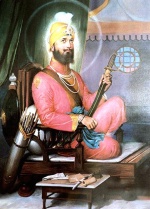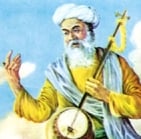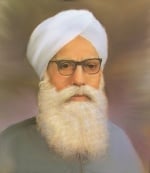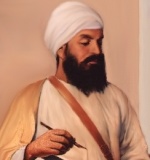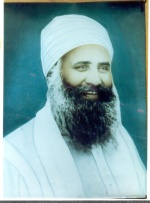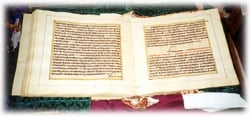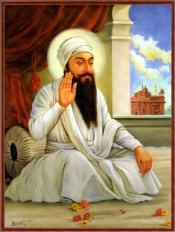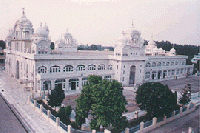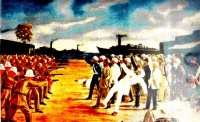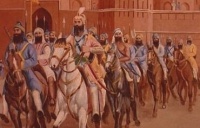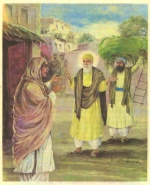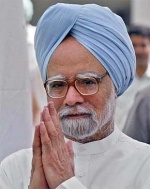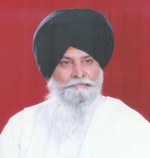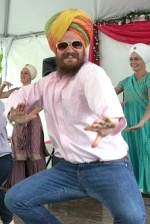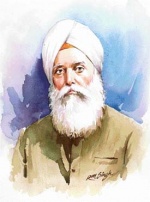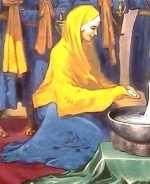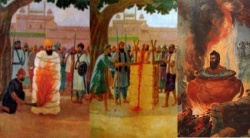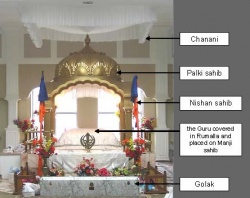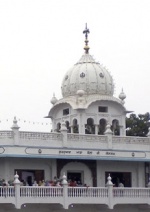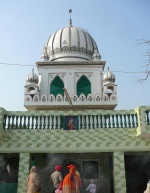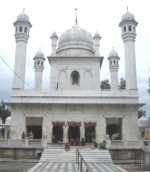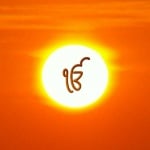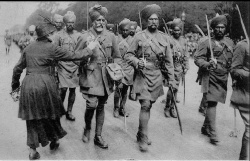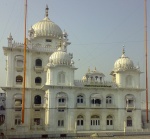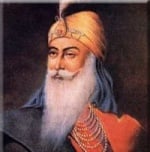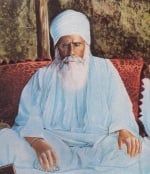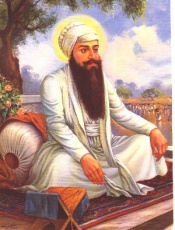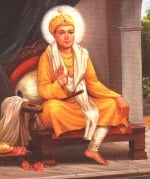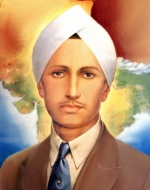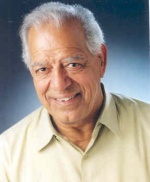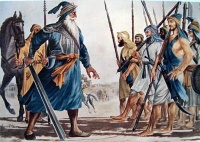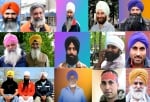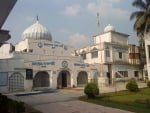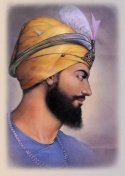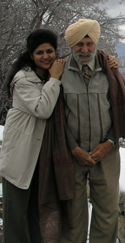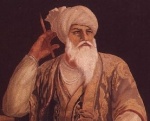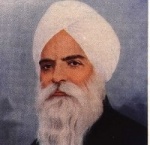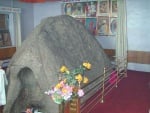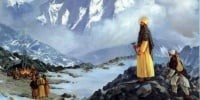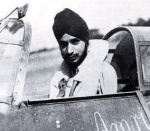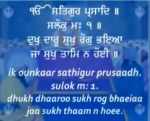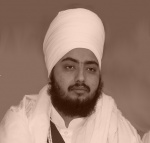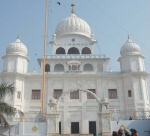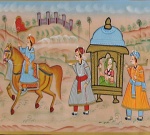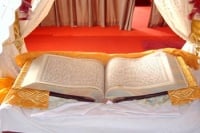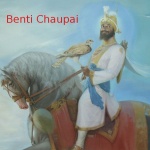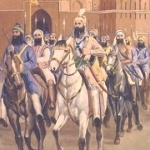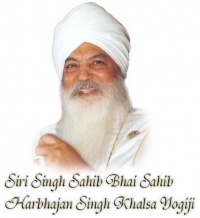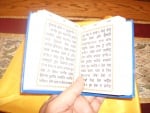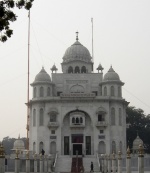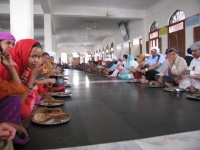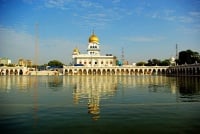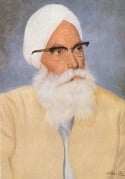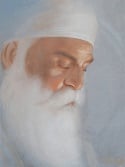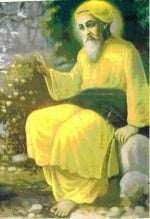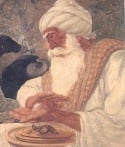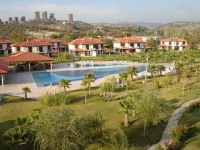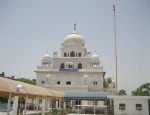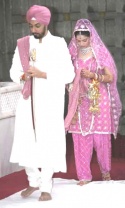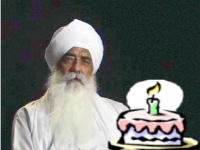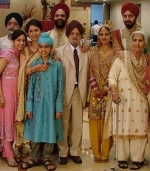AOW 300 to 399
Archived list of previously featured articles (AOW - Article of the Week) Original format - Full screen width.
- New Format - Half screen width - Archived Articles of the Week
- Proposed Featured Articles, AOW 1 to 99, AOW 100 to 199, AOW 200 to 299, AOW 400 to 499, AOW 500 to 599
Contents: Top
300 301 302 303 304 305 306 307 308 309 310 311 312 313 314 315 316 317 318 319
320 321 322 323 324 325 326 327 328 329 330 331 332 333 334 335 336 337 338 339
340 341 342 343 344 345 346 347 348 349 350 351 352 353 354 355 356 357 358 359
360 361 362 363 364 365 366 367 368 369 370 371 372 373 374 375 376 377 378 379
380 381 382 383 384 385 386 387 388 389 390 391 392 393 394 395 396 397 398 399
- Select all the Pictures of the Week: ALL POW
- Select all the Guru's Messages: All Guru's Messages
- This is a list of all Article of the Weeks: AOW 300 to 399
301
On 16 June of every year since 1606, the Sikhs have commemorated the martyrdom of Guru Arjan, the fifth Sikh Guru and the first Sikh Martyr.
The story of the execution of the Sikh Guru, under the orders of the Mughal Emperor Jahangir has suffered at the hands of poets, street entertainers and historians alike; the reality of the facts has been lost.
In about a century after Guru Nanak, Sikhism turned from a small minuscule sect into a mass movement. Many thousands of dedicated adherents followed the teachings of the Sikh Gurus; even some prominent Muslims who enjoyed a privileged position in the Mughal state during this period embraced Sikhism. The Gurus ideology was gaining great momentum.
The Mughal rulers found it difficult to tolerate the growth of Sikhism and its ever-increasing popularity. The reaction of the orthodox Muslims is found in the memoirs of Emperor Jahangir, the Tuzuk-i- Jahangiri. The main reasons for the execution of the Guru can be listed under three headings- Religious, Personal and Political. .....More
Contents: Top 300. 310. 320. 330. 340. 350. 360. 370. 380. 390.
302
Hukam is a Gurmukhi word derived from the Persian "hukm", meaning command or order. Hukam refers to an important fundamental concept in Sikhi.
The adherents of this faith believe in the "Hukam of the Lord" - Guru Nanak, the founder Guru says, "How can one become pure?; how can the veil of illusion be torn away? O Nanak, walk in His Hukam; it is written in your destiny (1)" (SGGS p 1). So walk your life in his Hukam!
Now, what exactly does this word Hukam mean in our daily life?
In Sikhism, this Punjabi word literally means "divine will". A Sikh accepts that everything in the Universe happens according to the Will of an all powerful God, who is referred to as Waheguru. It is by the command of Waheguru that we are born and we die. Without His command ".... even a leaf on the tree would not move" is a common saying in Punjabi. .....More
Contents: Top 300. 310. 320. 330. 340. 350. 360. 370. 380. 390.
303
Hasan Abdal is a historical town in Northern Punjab, Pakistan. It is 40 km northwest of the centre of Rawalpindi just off the Rawalpindi-Peshwar road. It is famous for Gurdwara Sri Panja Sahib, one of the most sacred places of Sikhism. Thousands of Sikhs and Hindus visit the Gurdwara on the eve of Baisakhi every year.
On the nearby hill, at an altitude of 714 meters, there is a meditation chamber related to a 15th century Muslim Saint, Baba Wali Qandhari, popularly known as Baba Hasan Abdal. The saint stayed in Hasan Abdal from 1406-1516 AD but died and is buried in village Baba Wali near Qandhar also spelt as Kandahar (Afghanistan).
Guru Nanak with Bhai Mardana and a small party halted at this place at the foot of a hill. Under a shady cool tree, the Guru and Bhai Mardana started reciting Kirtan as was their normal practise. Slowly, the local devotees began to gather around the Guru. Soon, a large crowd of people began regularly to gather around the Guru. He talked to them about God and the true path of the holy. He told them the greatness of God and His creations. More and more people began to gather around him every day.
On the top of the nearby hill, Wali Qandhari had established a celebrated and popular dera (holy place) near a natural fountain. .....More
Contents: Top 300. 310. 320. 330. 340. 350. 360. 370. 380. 390.
304
Baba Wali Kandhari was a Sufi saint or pir who is believed to have been born in about 1476 in Kandahar in Afghanistan. In about 1498 he moved to Hasan Abdal near present-day Rawalpindi in Pakistan.
This town of Hasan Abdal is about fifty kilometres from Rawalpindi to the west side of the mountains. A very hilly area, in some places natural fountains or springs flow from the ground.
On a nearby hill, at an altitude of 714 meters, Wali Kandhari settled and built a small house near a natural fountain. The water here was very clear and so the town people used to come to fetch drinking water from this fountain. There was no other source of fresh drinking water nearby. The water from the fountain then progressed down the hill to the small town. Kandhari would preach to the simple people who came there. Soon he had enlarged his house into a small community building or "dera".
But as time progressed, he became arrogant and began to discriminate against those who had not accepted Islam. .....More
Contents: Top 300. 310. 320. 330. 340. 350. 360. 370. 380. 390.
305
Prahlada has been given special status in Sikhi as he is mentioned in Gurbani several times.
He is considered a Gurmukh and given a separate identity in Gurmat as he was a true devotee to God (Hari); it's better to call him Bhagat Prahlad.
His story is told in the Adi Granth and again in the Dasam Granth. He was a God loving person. His father Harnaakash was an egoistic and a Manmukh; he did not believe in the supremacy of God; he only believed in himself.
Through performing severe penances and meditation, King Harnaakash had been granted a boon that he would neither be killed by man or beast, with a weapon or without a weapon, during day or night, indoors or outdoors, on earth or in the sky. It is through the protection of this boon that he sought undisputed lordship over the material world. He declared "There is non stronger than I. I am the lord of the three worlds. I should be worshipped as such".
Due to his overwhelming ego, he considered himself to be a god and he declared that there was no other God present on earth. However, to remove his confusion God himself came in the form of Narsingh to settle this mistake. .....More
Contents: Top 300. 310. 320. 330. 340. 350. 360. 370. 380. 390.
306
Punjab is the "land of five rivers" in north west India and north east Pakistan. Punj means "five" and aab means "waters", so "punjab" means "land of five rivers". These five rivers that run through Punjab, having their originating source as various small lakes in Himalayas. If one were to go across the Punjab starting from Delhi and to Afghanistan, the rivers are in this order.
The Beas merges into the Satluj at Harike near Ferozepur in East Punjab just before crossing the border into west Punjab (Pakistan) where it eventually merges into the river Indus.
The area of Punjab that is between the Beas and Satluj is called the Doaba. The major cities in this part of Punjab are Jalandhar, Hoshiarpur and Nawanshahr. Majha is the area between the Beas and Chenab and on both sides of the Ravi, this part is called the heart of Punjab and its cities include, Lahore, Amritsar, Gurdaspur, Sialkot, Kasur, Lyallpur(Faisalabad), Faridkot and Ferozepur. .....More
Contents: Top 300. 310. 320. 330. 340. 350. 360. 370. 380. 390.
307
Sultan ul Quam Nawab Jassa Singh Ahluwalia (1718-1783) was a prominent Sikh leader during the period of the Sikh Confederacy.
He was democratically elected as the supreme military commander of the Sikh Confederacy on March 29, 1748 - on Baisakhi, which is considered to be one of the greatest honours given, in the 18th century, to any Sikh.
He was further honoured on 1754 by the Sikh Confederacy with the title of 'Nawab' that was conferred on him at Amritsar, after the passing of Nawab Kapur Singh in 1753.
He was also the Misldar (chief/baron) of the Ahluwalia misl or army group. This period was an interlude, lasting roughly from the time of the death of Banda Singh Bahadur in 1716 to the founding of the Sikh Empire in 1801.
The period is also sometimes described as the Age of the Misls. He was the also the fourth jathedar (leader) of Buddha Dal. .....More
Contents: Top 300. 310. 320. 330. 340. 350. 360. 370. 380. 390.
308
The Six Qilas (or Forts) of Anandpur sahib are the six forts which were constructed by Guru Gobind Singh, during the 25 years that the Guru spent at Anandpur sahib. The neighbouring hill Rajas and their Mughal allies became increasingly hostile towards the success of the Sikh community thriving in their midst.
Seeing the need to protect Anandpur from its hostile neighbours the Guru ordered the construction of a series of six defensive forts (Qilas in the Persian language). One central fort with five others encircling the town. There were several other minor forts around the city, but the five forts encircling the fort surrounding the city were the main defensive forts that bore the series of attacks and seige that led to the Guru's eventual decision to leave the city under its attackers solemn promises of safe passage to Punjab.
The six forts constructed by Guru Gobind Singh at Anandpur sahib are:
- Keshgarh - Keshgarh.
- Lohgarh (fort of steel) - Lohgarh,
- Agamgarh or Holgarh (fort of colour) - Agamgarh or Holgarh,
- Anandgarh (fort of bliss) - Anandgarh.
- Fatehgarh (fort of victory) - Fatehgarh and
- Qila Taragarh - Taragarh ' .....More
Contents: Top 300. 310. 320. 330. 340. 350. 360. 370. 380. 390.
309
Anandpur Sahib was founded in 1664 by Guru Tegh Bahadur Sahib Ji. The city is situated at the foot of the Shivalik mountain range on the banks of the River Sutlej.
Guru Gobind Singh ji grew up here and protected the city by constructing a chain of forts - Kesgarh, Anandgarh, Lohgarh, Holgarh and Taragarh.
It was at Anandpur Sahib that Guru Ji trained his Sikhs in the art of warfare and created special knight-errants the Nihangs. But Takhat Sri Kesgarh Sahib, Anandpur will always be best remembered for the creation of Guru Ji's order of the Khalsa.
In the inner sanctum of Takhat Sri Kesgarh, Anandpur Sahib are kept the shastras (weapons) associated with Guru Gobind Singh Ji. These weapons are taken out in the evenings and shown to the sangat.
- The historic Khanda associated with the amrit ceremony on Vaisakhi 1699
- Karpa Barsha. In the year 1673 when Guru Sahib Ji was engaged to Mata Jito Ji, Guru ji's father-in -law wanted the marriage party to go to Lahore. However, instead of going to Lahore Guru Ji established a new township near Anandpur Sahib and named it Guru Ka Lahore. When the residents complained of water shortage, Guru Ji struck the ground with this very barsha and water came gushing out. .....More
Contents: Top 300. 310. 320. 330. 340. 350. 360. 370. 380. 390.
310
Most of Guru Gobind Singh's bani is found in the Dasam Granth. The Dasam Granth (Punjabi: ਦਸਮ ਗ੍ਰੰਥ), historically known as Dasven Padshah Ka Granth (Punjabi: ਦਸਵੇਂ ਪਾਤਸ਼ਾਹ ਕਾ ਗ੍ਰੰਥ) (Book of the Tenth Emperor), is the second most important scripture of Sikhism.
It contains text composed by the 10th Sikh Guru, Guru Gobind Singh. The compositions of the Granth set out the ideas, thoughts and guidelines for the future of the Nanak panth as enshrined in the Khalsa. The Jaap Sahib, Tvye Prasad Sawaiye (Amrit Savaiye) and Benti Chaupai, all compositions from the Dasam Granth, are part of the daily prayers Nitnem of the Sikhs, which serve, as well, as a part of the Sikh initiation Khande di Pahul ceremony.
Translation of Quote from Bachiter Natak:
'I establish thee as my son, that you spread My Path. Go and instruct men in Righteousness and the Moral Law, and make people desist from evil.' I stood up, with joined palms, and bowing my head to Lord God, I said: "Thy Path I shall spread only if Thou be my support".
For this was I born into the world, I utter only how and what God uttered to me, for I am the enemy of no one. He who calls me God will surely burn in the fire of hell. For I am only the servant of God: doubt not the veracity of this statement. I am but the slave of the Supreme Being come to witness His Play. I tell the world only what my God said to me, for I will not be silenced through fear of mere mortals. .....More
Contents: Top 300. 310. 320. 330. 340. 350. 360. 370. 380. 390.
311
Gurdwara Sis Ganj Sahib is built at the site in the Chandni Chowk area of Old Delhi, where the revered ninth Sikh Guru, Guru Tegh Bahadur was beheaded, on Wednesday, November 24, 1675, on the orders of the Mughal emperor Aurangzeb for refusing to convert to Islam. Before his body could be quartered and exposed to public view, it was stolen under the cover of darkness by one of his disciple, Lakhi Shah Vanjara, who then set his home alight to cremate the Guru's body.
The 'Sis' (head) of Guru Tegh Bahadur was taken to Anandpur Sahib by Bhai Jaita, another devotee of the Guru where it was cremated by the Guru's young son, Guru Gobind Rai.
Bhai Jaita who had been of the Majhabi (scavenger) caste, was renamed Bhai Jivan Singh on the day that Guru Gobind Rai in 1699 created the Khalsa and added the names Singh or Kaur to the names of Sikhs. Bhai Jivan Singh was one of the Martyrs at Chamkaur. Guru Gobind Singh was the tenth and last "living" Guru of the Sikhs. .....More
Contents: Top 300. 310. 320. 330. 340. 350. 360. 370. 380. 390.
312
Baba Kharak Singh was born in (6 June 1868 - 6 October 1963) at Sialkot, now in Pakistan. He was a Sikh political leader and virtually the first president of the Shiromani Gurdwara Parbandhak Committee. Baba ji was from the first batch of graduates of the Punjab University, Lahore. His father, Rai Bahadur Sardar Hari Singh, was a wealthy contractor and industrialist.
Kharak Singh, having passed his matriculation examination from Mission High School and intermediate from Murray College, both at Sialkot, joined Government College, Lahore, and was among the first batch of students who graduated from the Punjab University in 1889.
He then joined Law College, Allahabad, but could not complete his course owing to the death of his father and elder brother in quick succession. He returned to Sialkot to manage the family property. He started his public life in 1912 as chairman of the reception committee of the 5th session of the Sikh Educational Conference held at Sialkot.
Three years later in 1915, as president of the 8th session of the Conference held at Tarn Taran, he surprised everyone by walking to the site of the conference breaking the custom of being carried in state on a buggy driven by six horses. .....More
Contents: Top 300. 310. 320. 330. 340. 350. 360. 370. 380. 390.
313
Guru Gobind Singh ji (Gurmukhi: ਗਰੂ ਗੋਬਿੰਦ ਸਿੰਘ) (Friday, January 5, 16661, in Patna, Bihar, India - Thursday, 21 October, 1708) was the tenth and last of the Ten human form Gurus of Sikhism. He became Guru on November 11, 1675 at the age of nine, following in the footsteps of his father Guru Teg Bahadur ji.
Guru Ji was born on January 5, 1666 and moulded the Sikh religion into its present form with the formation of the Khalsa in 1699. The tenth Guru (teacher) of the Sikh faith, was born Gobind Rai. It may not be out of the way to say here that throughout the annals of human history, there was no other individual who could be of more inspiring personality than Guru Gobind Singh.
Guru Ji infused the spirit of both sainthood and solider in the minds and hearts of his followers to fight oppression and support righteousness (Dharma) in order to restore justice, peace and to uplift the down-trodden people in this world. In the short 42 year of life and a Guruship of only 33 years, the Guru contributed immensely to Sikhism and to the world and his gift to all the peoples of the world still remains unmatched to this day. .....More
Contents: Top 300. 310. 320. 330. 340. 350. 360. 370. 380. 390.
314
Bhagat Namdev ji (29 October, 1270 - 1350) (Gurmukhi: ਭਗਤ ਨਾਮਦੇਵ) was born on October 29, 1270 in the state of Maharashtra village of Naras-Vamani, in Satara district (presently called Narsi Namdev). His father, a calico printer/tailor, was named Damshet and his mother's name was Gonabai.
Most of the spiritual message of Bhagat Namdev, just like our gurus', emphasized the importance of living the life of a householder (grist jeevan) and that through marriage and having a family one could attain enlightenment. He emphasized that the truest form of bandage or devotional meditation, is to enter matrimony and jointly seek the holy experience Waheguru.
Namdev was married before he was eleven years of age to Rajabal, daughter of Govinda Sheti Sadavarte. They had four sons and one daughter. Janabai, the family's maidservant and a bhagat and poetess in her own right, records the tradition that Namdev was born to Gonabai as a result of her worship of Vitthala in Pandharpur. This present temple building was constructed by Sardar Jassa Singh Ramgarhia and the tank by its side was repaired by Rani Sada Kaur, mother-in-law of Maharaja Ranjit Singh. .....More
Contents: Top 300. 310. 320. 330. 340. 350. 360. 370. 380. 390.
315
Professor Sahib Singh (16 February, 1892 - 29 October 1977) was a renowned Sikh academic who made a tremendous contribution to Sikh literature.
He was an exceptional grammarian, author, scholar and theologian born in a Hindu family in the village of Phattevali in Sialkot district of undivided Punjab.
He was named "Natthu Ram" by his father, Hiranand, who kept a small shop in the village. Soon the family shifted to Tharpal, another nearby village in the same district.
As a youth, Natthu Ram was apprenticed to the village Maulawi (Muslim teacher), Hayat Shah, son of the famous Punjabi poet, Hasham, upon whom his royal patron, Ranjit Singh, the Maharaja of the Punjab, had settled a permanent jagir.
Winning a scholarship at his middle standard examination, Natthu Ram joined the high school at Pasrur. It was here that he decided to become a Sikh and received in 1906 the rites of the Khalsa. Upon joining the Khalsa panth, his new name was Sahib Singh.
The untimely death of his father made the situation hard for him, yet he managed to plough through first Dyal Singh College, Lahore, and then the Government College, Lahore. .....More
Contents: Top 300. 310. 320. 330. 340. 350. 360. 370. 380. 390.
316
Bhai Santokh Singh, (1787 - 1843) the noted author of six important literary works - Naam Kosh, Guru Nanak Parkash, Garb Ganjni Teeka, Balmik Ramayan, Atam Purayan Teeka and his magnum opus, Sri Gur Partap Suraj Granth aka Suraj Parkash, was born on 8 October 1787.
He was the son of Bhai Deva Singh and Mata Rajadi, professional cloth printers of Nurdin village, also known as Sarai Nurdin, 7 km northwest of Tarn Taran in Amritsar district of the Punjab, India.
His father, though poor, was educated and well versed in the sacred texts. He sent his son, after preliminary education at home, to Amritsar where he became a pupil of Giani Sant Singh (1768 - 1832), a renowned man of letters and custodian of Sri Darbar Sahib.
After having studied Sikh Scripture and history, Sanskrit language and literature, poetics, philosophy and mythology at Amritsar for about 15 years, Santokh Singh moved to Buna, an old town on the right bank of the Yamuna in the present Yamuna Nagar district of Haryana, some time before 1813.
There he established himself as a writer, poet, and preacher. .....More
Contents: Top 300. 310. 320. 330. 340. 350. 360. 370. 380. 390.
317
Baba Ishar Singh Ji (26 March 1913 - 7 October 1963) (Born Inder Singh ) was the son of S. Bagga Singh and Mata Partap Kaur. He was born on the 26 March 1913 (13th Chet) at the Village of Jhoraran, District Ludhiana (Punjab, India) He died on the 7 October 1963 at the age of 50 years.
Inder Singh (his childhood name) had four brothers and two sisters. Even as a child he was very soft spoken, of a kind temperament and a very helpful attitude to others. He was very fond of listening to the historical accounts of the lives of the Sikh Gurus and the stories of the lives of saintly and divine people.
That is why, perhaps, even at a young age he never liked to indulge in any 'trivial' playing or simple games that most children are fond of. Instead of jumping and indulging in playing around with boys of his age, he would rather spend time meditating on the formless god, in a secluded and quiet place. .....More
Contents: Top 300. 310. 320. 330. 340. 350. 360. 370. 380. 390.
318
Bichitra Natak (or Bachittar/Vichitra) (Gurmukhi ਬਚਿਤਰ ਨਾਟਕ meaning "Wonderful Drama") is the autobiography of Guru Gobind Singh, the 10th Sikh Guru.
It is a part of the Dasam Granth and is the name given to the third Bani in the second holy scriptures of the Sikhs. This text spans from page 94 to page 175 of the 2326 pages of this holy book of the Sikhs at www.srigranth.org. (Original text is over 1428 pages)
This Bani is an autobiographical narrated by the tenth Sikh Guru, Guru Gobind Singh for the first 32 years of his life. Although the word "Natak" means "drama" in Punjabi, this is no drama. The Guru has outlined the circumstance and history of the time and how great courage and strength was required to overcome the many hurdles that were upon the community.
It starts with a praise of Akal Purakh and then gives a genealogy of Bedis and Sodhis starting from Lord Rama and his two sons. Then comes the author's own biography and includes the battle of Nadaun, Husaini battle and the arrival of Prince Muazzam in the Punjab. It continues the ancient history until 1696 AD. .....More
Contents: Top 300. 310. 320. 330. 340. 350. 360. 370. 380. 390.
319
On 16 September every year, the Sikhs celebrate the Gur Gadi day of their spiritual master, Guru Arjan Dev, the fifth Guru of the Sikhs.
Guru ji was the embodiment of Godly devotion, Selfless Service and Universal Love. He was the treasure of celestial knowledge and spiritual excellence. He substantially contributed towards the welfare of society and the formation of the Sikh faith.
He stood steadfastly for the principles he believed in, even sacrificed his own life, and attained a unique and unparalleled martyrdom in the history of mankind.
Guru Ji was born on May 2, 1563, in the house of Guru Ram Das, the fourth Guru of the Sikhs. He was the youngest of the three sons of the fourth Sikh Guru. Guru Ram Das envisioned heavenly qualities in his youngest son Arjan. From childhood Guru Ram Das found him imbued with Naam, the remembrance, love and affinity with God and always immersed in tranquil bliss.
The Guruship was destined to be bestowed upon Guru Arjan. It is said that one day, baby Arjan crawled up on the Divine throne of his maternal grandfather, Guru Amar Das the third Guru, and sat there comfortably. The Guru smiled and prophesied, “Maternal Grandson will ship the Naam across.” .....More
Contents: Top 300. 310. 320. 330. 340. 350. 360. 370. 380. 390.
320
Gurdwara Karamsar, Rara Sahib is a result of the charismatic dedication of two noble spirits Sant Isher Singh Ji and Sant Kishan Singh Ji. On the request of Sardar Gian Singh Rarewala, they had stayed in the village Rara Sahib and had made this desolate place their abode.
This village that was transformed from Rara to Rara Sahib by the visit of the sixth Sikh Guru, Guru Hargobind Ji. Rara Sahib is located 22km south-east of Ludhiana, 14km north-east of Ahmedgarh and 22km north-west of Khanna. It lies on the Chawa-Payal-Ahmedgarh road and is situated on the bank of Bathinda branch of the Sirhind Canal.
The witness of Sant Isher Singh Ji's nine-year meditation and penance is the well, which is still intact. This memorial of Sant's devotion is located half a kilometre to the east of the main Gurdwara building. .....More
Contents: Top 300. 310. 320. 330. 340. 350. 360. 370. 380. 390.
321
As the Komagata Maru approached Calcutta on September 26, 1914, a European gunboat signalled the ship to stop. The ship was put under guard and the passengers were held as prisoners.
Then the ship was taken to a place called Budge Budge, about seventeen miles (27Kms) away from its original destination of Calcutta.
These new developments took the passengers by surprise. After two months of litigation in Canada they were not interested in any new developments of this kind. Upon inquiry by Baba Gurdit Singh, an official informed him that the passengers were being sent to Punjab via a special train.
Many of the passengers did not want to go to Punjab. They had business to attend to in Calcutta, some wished to look for work there, and most importantly, the passengers wanted to place the Guru Granth Sahib, which they had taken with them on their journey, in a Calcutta Gurdwara. .....More
Contents: Top 300. 310. 320. 330. 340. 350. 360. 370. 380. 390.
322
Bhai Baghel Singh (1730 - 1802) was born in village Jhabal, District Amritsar in a Dhaliwal Jatt family around 1730's.
From humble beginnings he arose to become a formidable force in the area between River Sutlej and River Yamuna. He aligned himself with Karor Singhia misl led by Sardar Karora Singh. After the early demise of Karora Singh, Bhai sahib succeeded as a leader of Karora Singhia misl in 1765.
He is celebrated in Sikh history as the vanquisher of Mughal Delhi. Gurdwara Nanak Piao in Delhi was constructed by Baghel Singh
Karora Singhia misl had 12,000 fighting men according to Syed Ahmad Latif, a Muslim historian. As well as being a good soldier, Baghel Singh was a very good political negotiator and was able to win over many an adversary to his side. .....More
Contents: Top 300. 310. 320. 330. 340. 350. 360. 370. 380. 390.
323
When Dr Kartar Lalvani founded Vitabiotics in London in 1971, it was the UK’s only specialist vitamin supplement company. Today, the company produces a range of well-known brands, including Wellwoman and Omega-H3, which treat everything from mouth ulcers to menopause.
The global Vitabiotics Group turns over about US$371m a year and is driven by Lalvani and his son, Tej. But it wasn’t always plain sailing for the enthusiastic and modest Sikh businessman. Indeed, the company’s roots were in adversity.
Lalvani was born in Karachi in 1931. His father was a successful pharmacist and the family lived comfortably. But in 1947, the partition of India forced them to flee to Bombay, where they had to start their lives over from nothing.
Lalvani recalls it as a devastating period in his life. Aged just 16, he had to leave his secure, contented life and move to an unknown city more than 500 miles away. .....More
Contents: Top 300. 310. 320. 330. 340. 350. 360. 370. 380. 390.
324
Mata Sulakhni (1473-1545) was the wife of Guru Nanak, the founder of Sikhism. She was the daughter of Mool Chand (sometimes referred as Mul Chand Chauna), a Chona Khatri of Batala.
Mul Chand held a minor revenue office at the village of Pakkhoke Randhave in Gurdaspur district of the Punjab. Mata ji's mother's name was Chando Rani.
Sulakhani was married to Guru Nanak at Batala on 8 July 1487 (Harh 24, 1544) but this auspicious day is traditionally celebrated each year in Batala during late August.
Two sons were born to the couple - Sri Chand in 1494 and Lakhmi Das in 1497. Mata ji survived Guru Nanak and is believed to have spent the last years of her life in Kartarpur, the community that Guru Nanak had founded on the right bank of the river Ravi. She passed away at Kartarpur in 1545.
In the book, Mahan Kosh, Bhai Kahn Singh Nabha writes that a girl was born in the village Pakhoke, district Gurdaspur with "super characteristics," but neglects to elaborate what these were. He stated that she was named Sulakhani. .....More
Contents: Top 300. 310. 320. 330. 340. 350. 360. 370. 380. 390.
325
India's fourteenth Prime Minister, Dr. Manmohan Singh is rightly acclaimed as a thinker and a scholar. He is a follower of the Sikh faith and is the first non-Hindu prime minister of India.
He is well regarded for his diligence and his approach to work, as well as his accessibility and his unassuming demeanour.
The first Sikh Indian prime minister, Singh was sworn in on May 22, 2004. He is a native Punjabi speaker. Manmohan Singh is the 14th and current Prime Minister of India, considered to be the "architect of modern India."
He was born on 26 September 1932, in Gah, West Punjab (now in Pakistan) and is a member of the Indian National Congress party.
Singh is an economist by trade, and has formerly served in the International Monetary Fund. His economics education included an undergraduate (1952) and a master's degree (1954) from Punjab University; an undergraduate degree (1957) from Cambridge University (St. John's College); and a doctorate (1962) from Oxford University (Nuffield College). .....More
Contents: Top 300. 310. 320. 330. 340. 350. 360. 370. 380. 390.
326
It is beyond doubt that "Panth Rattan" Giani Sant Singh Maskeen (1934 - 2005) was the most venerated, the best known and the most honoured religious lecturer among the Sikhs. This was due to the fact that he had an in-depth knowledge of Gurmat and Gurbani, a wide knowledge of other religions and an excellent inter-woven art of delivery.
He always fixed his annual programmes in advance and would stick to his schedules come what may. He had made a profound study of Sri Guru Granth Sahib and had acquired a deep knowledge of the Vedas and Bhagat Vanis as enshrined in the Sri Guru Granth Sahib; some of which was learnt from the famous Nirmalas Sant Balwant Singh ji.
Apart from Gurmukhi, Urdu and Hindi he had a command over Farsi (Persian) and often quoted Bhai Nand Lal Ji in fluent Farsi. During discourses he also used to quote from the religious texts of Hindu, Muslim and other world religions with all the useful relevant references. He was a delight to listen to. Due to this unique talent, his video lectures are still very popular on Sikh TV channels. .....More
Contents: Top 300. 310. 320. 330. 340. 350. 360. 370. 380. 390.
327
This articles lists Gurbani relating to dancing and singing which are activities where many preconceived prejudices and views exist in the Sikh and Punjabi community. Singing and dancing are great traditions of Punjab which have been in existence for many thousands of years.
These traditions are encouraged and supported by Sikhi and Gurbani provided that they are used as a positive, communal and constructive function for unity and celebration of society. When used to escalate ones ego or pride; or for self-excitation; or for sensual gratification, these same activities are condemned by the Guru. The Guru tells us:
| I am a sacrifice, my soul is a sacrifice, to those who look beautiful in the Name of the Lord, Har, Har. The Gurmukhs sing , the Gurmukhs dance, and focus their consciousness on the Lord. ((1)(Pause)) |
Singing and dancing are great to lift ones mood and bring brightness into the mind; they also provide great exercise and are very beneficial for the circulation of blood in the body. .....More
Contents: Top 300. 310. 320. 330. 340. 350. 360. 370. 380. 390.
328
What influence does the company that we keep have on us? According to the Guru Granth Sahib, the company that we keep has a marked influence on us resulting in disastrous consequences if we are not careful. "Kabeer, I have been ruined and destroyed by bad company" (SGGS p 1369). Bhagat Kabir tells us frankly how his life was destroyed due to the companionship of bad sangat.
Gurbani warns us that through our relationship with others around us we ourselves change. We all know the saying "A person is the product of his or her environment." The Sri Guru Granth Sahib reveals to us that our friendships and the sangat (company) that we keep has a profound influence on our outlook, the way we act, the way we behave and our future development.
The Guru says: "False is friendship with the false and greedy. False is its foundation" (SGGS p 1412). The message again is clear; friendship with a fool, a untruthful person,.... .....More
Contents: Top 300. 310. 320. 330. 340. 350. 360. 370. 380. 390.
329
Akal Ustat is the name given to the second Bani in the second holy scriptures of the Sikhs called the Dasam Granth. This text spans from page 33 to page 94 of the 2326 pages of this holy book of the Sikhs at www.sridasam.org. (Original text is printed over 1428 pages). It is composed of 271 verses, and is largely devotional in nature.
The word "Akal" mean the "timeless primal being" and the word "Ustat" means "praise". So together the words "Akal Ustat" means the "praise of the Almighty God". Guru Gobind Singh, the tenth Sikh Guru writes praises of God with love and dedication saying that God is worshipped by various peoples in many different ways and with varying names and methods.
In the Akal Ustat, the Guru describes the Almighty God in all His glory by making use of metaphysical references and the masterful use of imaginative language and image creating phrases. .....More
Contents: Top 300. 310. 320. 330. 340. 350. 360. 370. 380. 390.
330
Bhai Kahn Singh, of Nabha (30 August 1861- 24 November 1938), is a celebrated Sikh scholar and encyclopaedia writer, who was born on 30 August 1861 at the village of Sabaz Banera which is about 5 miles from Nabha, in what was then territory of the princely ruler of Patiala. His father was Narain Singh and his mother was Har Kaur.
Bhai sahib did not attend any school or college for formal education as his father arranged for him to study languages including Hindi, Brij Bhasha and Sanskrit and also poetry from Pandits in and around Nabha. So that by the age of 10, Bhai sahib could recite freely both the Guru Granth Sahib and the Dasam Granth.
Of the many literary works among Bhai Kahn Singh's collection, Gurushabad Ratandkar Mahan Kosh (1930), an encyclopaedia of Sikh literature, will remain a permanent monument to his unmatched excellence, industry and erudition.
This Punjabi language encyclopedia is not only the first dictionary of Sikh Scriptures and books on Sikh Religion .....More
Contents: Top 300. 310. 320. 330. 340. 350. 360. 370. 380. 390.
331
Mata Sahib Kaur (1 November 1681 - 1747) also Mata Sahib Devan is known as the "Mother of the Khalsa". She earned the distinction by instilling the first Amrit with the sweetness that balances its fierceness.
Mata Sundari ji (also known as 'Mata Jito ji') was the only wife of Guru Gobind Singh. Mata Sahib Kaur, who was called 'Sahib Devan' before receiving Amrit, was the Spiritual Mother of the Khalsa, however some historians have mistakenly confused Mata Sahib Kaur as having been married to Guru Gobind Singh.
Mata ji, whose name before taking Amrit was Mata Sahib Devan Ji, was born on the 1 November 1681 in a village called Rohtas, District Jehlum, in West Panjab, (now in Pakistan).
Her mother’s name was Mata Jasdevi Ji and father’s name was Bhai Rama Ji. Her father, who was an ardent sewak (devotee) of Guru Gobind Singh, influenced her to the extent that she wanted to devote her whole life in the service of the Guru Sahib. .....More
Contents: Top 300. 310. 320. 330. 340. 350. 360. 370. 380. 390.
332
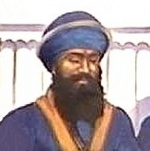
Bhai Dharam Singh (3 November 1666 - 1708), one of the Panj Piare or the Five Beloved, the forerunners of Khalsa and was a farmer by profession. He was the son of Bhai Sant Ram and Mai Sabho, of Hastinapur, an ancient town on the right bank of the Ganges, 35 km northeast of Meerut (29°N, 77° 45'E).
Dharam Das, as he was originally named, was born around 1666. As a young man, he fell into the company of a Sikh who introduced him to the teachings of the Gurus. He left home at the age of thirty in quest of further instruction. At the Sikh shrine of Nanak Piau, dedicated to Guru Nanak, he was advised to go to Guru Gobind Singh at Anandpur, where he arrived in 1698.
A few months later came the historic Baisakhi gathering of 1699 at which five Sikhs responding to five successive calls of Guru Gobind Singh. One after the other, they offered to lay down their heads. The Guru blessed them and called them Panj Piare, the five beloved ones. .....More
Contents: Top 300. 310. 320. 330. 340. 350. 360. 370. 380. 390.
333
In November 1675 at Chandni Chowk in the historic city of Delhi India, Bhai Mati Dasi, Bhai Sati Das and Bhai Dayal Das, the three chosen companions of Guru Tegh Bahadur Ji, the 9th Sikh Guru were all martyred under the orders of the chief Qazi of the Mughal Emperor Aurangzeb. Bhai Mati Das was publicly sawn in two, Bhai Sati Das was covered with cotton and set alight on fire and Bhai Dayal Das was boiled alive in a boiling hot cauldron.
Over the period 18 November to 24 November, 1675 the three Sikhs were first tortured and then killed for their refusal to renounce their own chosen faith of Sikhi and embrace under duress the faith of the Mughal government which was Islam.
The first to be tortured was Bhai Mati Das (d. 24 November 1675) (Punjabi: ਭਾਈ ਮਤੀ ਦਾਸ). He is one of the great martyrs in Sikh history. .....More
Contents: Top 300. 310. 320. 330. 340. 350. 360. 370. 380. 390.
334
On November 24, every year the world has celebrated the Gur Gaddi (guruship) of the tenth and last of the Ten Gurus in human form of Sikhism since 1675.
Guru ji was born on January 5, 1666 and became Guru on November 24, 1675 at the age of about nine, following in the footsteps of his father Guru Teg Bahadur. Guru Ji moulded the Sikh religion into its present form with the formation of the Khalsa in 1699.
The tenth Guru (teacher) of the Sikh faith, was born Gobind Rai. It may not be out of order to say here that throughout the annals of human history, there was no other individual who could be of more inspiring personality than Guru Gobind Singh.
Guru ji infused the spirit of both sainthood and soldiership into the minds and hearts of his followers to fight oppression and support righteousness (Dharma) in order to restore justice, peace and to uplift the down-trodden people in this world. In the short 42 years of life and a Guruship lasting only 33 years, the Guru contributed immensely to Sikhi, to India and to the world; his enormous gift to all the peoples of the world still remains unmatched to this day.
In glowing terms Swami Vivekananda writes "Guru Gobind Singh by a flash of his sword filled the dying soul of India with the life-giving light of Truth and Lo! it shone in all its glory again in the life of the new born Khalsa." .....More
Contents: Top 300. 310. 320. 330. 340. 350. 360. 370. 380. 390.
335
The Guru's Takhat or the Guru's throne is always centred at the front of the Darbar Hall; it is the central feature of the Gurdwara. As you walk into the main prayer hall in a Sikh temple, you will observe this immediately. The essential features of the Guru's throne are:
|
Sikhs treat their holy book as a living Guru or Teacher. This act of respect is a public resolution of a Sikh's commitment to the holy script or message or Shabad within the Guru Granth. .....More
Contents: Top 300. 310. 320. 330. 340. 350. 360. 370. 380. 390.
336
Gurdwara Mata Kaulan Sahib or Gurdwara Kaulsar Sahib is a sacred Sikh shrine on the west-side of Gurdwara Baba Atal in Amritsar, Punjab near the main Darbar Sahib at Harmandar Sahib.
Next to the Gurdwara Mata Kaulan lies a Sarovar (pool) known as Kaulsar Sahib or Kaulsar Sarvor, named after a holy lady who was raised as a Muslim called Bibi Kaulan, the adopted (possibly Hindu) daughter of the Qazi of Lahore.
She was a highly spiritual woman who was above religious divides and took refuge with the sixth master Guru Hargobind Ji at Amritsar (1606-1645). The samadh of Mata Kaulan lies at the western end of the Kaulsar Gurdwara.
The significance of Gurdwara Mata Kaulan and Kaulsar sarovar could be adjudged from the fact that Guru Hargobind, the sixth Sikh guru, had directed the devotees to take a dip in the Sarovar Kaulsar before the Golden Temple sarovar. (sakhi to this effect is written right outside the entrance of Gurdwara Bibi Kaulan, adjacent to Darbar Sahib). .....More
Contents: Top 300. 310. 320. 330. 340. 350. 360. 370. 380. 390.
337
Peer Budhan Ali Shah, also called Peer buddan Shah, Baba Buddan Shah, Faqir Buddhan Shah, Shams -ud -din, was a great noble Muslim saint who was a resident of Kiratpur before the township was established.
It is mentioned that on a black hill on Kehloor Mountain, there lived Pir Buddhan Shah, who had some goats. It is also said that he also kept a lion which daily took the goats grazing into the forest. One day Guru Nanak visited him and discussed spiritual matter with the Pir.
As the time for the return of the lion was approaching, he asked the Guru to leave, as the lion might attack the Guru. But to his utter surprise, as the lion returned it touched the feet of Guru Nanak.
The Pir realized the greatness of the personality of Guru Nanak and offered him some fresh milk. Guru sahib took half of the milk and told him to preserve half of the same that would be taken by his Sikh Gurditta by name, who might visit him one day. .....More
Contents: Top 300. 310. 320. 330. 340. 350. 360. 370. 380. 390.
338
Baba Ram Rai was the eldest son of the seventh Sikh Guru, Guru Har Rai Ji who had 2 other children. Guru Harkrishan was the youngest amongst the three siblings. Baba Ji's sister Sarup Kaur was almost four years older than him.
Ram Rai was nine years older than Guru Harkrishan. Baba Ji was born in a palace called Sheeh Mahal. It is said that this palace, the residence of Guru Har Rai, was constructed on the model of the Sheesh Mahal of Jaipur.
After Aurangzeb had imprisoned his father and had finally wrested the Mughal throne away from his eldest half-brother Dara Shikoh (who their father Shah Jahan had preferred as the next Emperor), Aurangzeb was goaded, by members of his Court, into accusing Guru Har Rai of lending Dara Shikoh support.
Aurangzeb demanded that Guru Har Rai make an appearance in Delhi. .....More
Contents: Top 300. 310. 320. 330. 340. 350. 360. 370. 380. 390.
339
The Sikh Gurus tell us very clearly that slowly our time in this world is running out.
As we live and enjoy the pleasures of mother Earth "plugged" into the world through our sensual inputs, the body's time is slowly seeping away.
The body like any other material item in the universe is slowly withering away; slowly, our life is moving towards the end!
The human body has excellent sensory inputs; the five senses provide us with unlimited amounts of entertainments. In fact most people these days do not have enough time to enjoy all the excitements that are available in the world today. The planet is full of exciting places to visit and enjoy; amazingly fascinating sports, hikes, and adventures to go on; unimaginable films, plays and theatres to visits, etc. - the list is endless.
The quality of the inputs from our senses are almost unmatched anywhere; .....More
Contents: Top 300. 310. 320. 330. 340. 350. 360. 370. 380. 390.
340
In the invocation to Japji Sahib, Guru Nanak provides us with a working definition of the Creator, in mystical but precise terminology -
"Ik-Oamkâr Satinam(u) Karta Purakh Nirbhau Nirvair Akâl-murat(i) Ajuni Saibhan Gur-prasâd(i)".
There is only one Creator, His existence is a reality, He is the only Creator, without fear or rancour, he is beyond death or birth, by himself is he luminous.
By studying Guru Granth Sahib, a Sikh learns that the Creator is Infinite, but HIS presence in His creation can be experienced with a disciplined state of mind. Satguru (the "True spiritual master") guides the Sikhs to experience HIM within.
For this, one needs to be ready to overcome all negative (primal) forces known as ego, anger, lust, deep attachment and greed, which trigger continuous ups and downs in the human mind.
In Gurbani, nothing is as important as the love developed for the Creator.... .....More
Contents: Top 300. 310. 320. 330. 340. 350. 360. 370. 380. 390.
341
With the outbreak of war in Europe, India, the Crown Jewel of the British Empire, joined the Allies in battle on the 4th of August 1914.
Contributing the most volunteers of any of the British imperial holdings that fought in the war, India produced between 900,000 to 1.5 million troops for combat by 1919.
Of these troops, the Sikhs, one of the two loyal 'martial races' of the British Raj, rallied in enormous numbers for the King, Empire, and the defence of Europe.
At the beginning of the war, Sikh military personnel numbered around 35,000 men of the 161,000 troops of the Indian Army, around 22% of the armed forces, yet the Sikhs only made up less than 2% of the total Indian population. By the end of the war 100,000 Sikh volunteers joined the British Armed forces with a few Sikhs also contributing to the French Air Service and the American Expeditionary Force. .....More
Contents: Top 300. 310. 320. 330. 340. 350. 360. 370. 380. 390.
342
In Sikhi cruelty is not permitted; it is an aspect of human life that has been addressed very clearly by the Sikh Gurus. "Cruelty, material attachment, greed and anger are the four rivers of fire. Falling into them, one is burnt, O Nanak!" (SGGS p 147).
If anyone wants to follow the Sikh way of life, they must discard cruelty, material attachment, greed and anger otherwise they will end up as ashes! What is the point of living a life where in the end you are thrown into the fire!
So don't be a Manmukh (ego-centric, self willed person), observe the Guru's prudent directions and become a Gurmukh; follow the well thought out instructions of the wise ones!
The Guru Ram Das tells us, "The hearts of the self-willed manmukhs are hard and cruel; their inner beings are dark. Even if the poisonous snake is fed large amounts of milk, it will still yield only poison." (SGGS p 171) Remove that "hardness" and "darkness" in your heart and become pure and pristine; .....More
Contents: Top 300. 310. 320. 330. 340. 350. 360. 370. 380. 390.
343

Bhai Jivan Singh (13 December 1649 - 22 December, 1705) was the name given to "Bhai Jaita" after he had received the rites of initiation at the hands of Guru Gobind Singh on the day - 14 April, 1699 when the Khalsa was inaugurated. He was a Sikh from Patna, India who had belonged to the Majhabi (scavenger) caste.
He received initiation into Khalsa panth from Guru Gobind Singh who had previously given him the special honour by addressing him as "Ranghareta Guru Ka Beta" ("the young man of the Ranghar caste is the Guru's own son"). The Ranghar caste was a caste created for those born of a union between a Hindu and a Muslim. Both the children and their descendants were considered outcasts by the Hindus.
It was Bhai Jaita who had risked his life to recover and return the severed head of Guru Tegh Bahadur to the Guru for cremation. He had been sent to Delhi where he witnessed Guru Tegh Bahadur's beheading in Chandni Chowk on 24 November 1675. .....More
Contents: Top 300. 310. 320. 330. 340. 350. 360. 370. 380. 390.
344
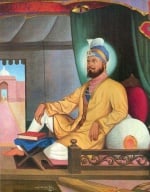
Painting by Amolak Singh.
Guru Har Rai Ji (Gurmukhi: ਗੁਰੂ ਹਰਿ ਰਾਇ) (31 January 1630 - 20 October 1661) was the seventh of the Ten Gurus of Sikhism. Guru ji was the son of Baba Gurdita Ji and Mata Nihal Kaur Ji and the grandson of the sixth Guru, Guru Hargobind. Although, Guru Har Rai Ji was a man of peace, he never disbanded the armed Sikh Warriors (Saint Soldiers), who earlier were maintained by his grandfather, Guru Hargobind.
He always boosted the military spirit of the Sikhs, but he never himself indulged in any direct political and armed controversy with the contemporary Mughal Empire. Once on the request of Dara Shikoh (the eldest son of emperor Shah Jahan), Guru Sahib helped him to escape safely from the bloody hands of Aurangzeb's armed forces during the war of succession.
Guru Sahib also established an Aurvedic herbal medicine hospital and a medical research centre at Kiratpur Sahib. There also he maintained a zoo. Once Dara Shikoh, the eldest son of Shah Jahan fell seriously ill by some unknown disease. The best physicians available in the country and abroad were consulted, but there was no improvement. .....More
Contents: Top 300. 310. 320. 330. 340. 350. 360. 370. 380. 390.
345
It was here at Takhat Patna Sahib, that Guru Gobind Singh, the tenth Sikh Guru was born in 1666. He also spent his early years here before moving to Anandpur. Besides being the birthplace of Guru Gobind Singh, Patna was also honored by visits from Guru Nanak as well as Guru Tegh Bahadur.
This is one of only five Takhats or "Seats of Authority" of the Sikhs. The Gurdwara Patna Sahib was constructed in honour of Guru Gobind Singh; like many historical Gurdwara's in India and Pakistan, this present Gurdwara was initially built by Maharaja Ranjit Singh.
Originally, at this place stood the haveli of Salis Rai Jouri, who was a great devotee of Guru Nanak. He was so much influenced by the teachings of the Guru that he converted his palatial home into a dharamsala (place where dharam is learned).
When Guru Tegh Bahadur visited Patna, he stayed in this exact site. A magnificent house was built above the dharamsala of Salis Rai. .....More
Contents: Top 300. 310. 320. 330. 340. 350. 360. 370. 380. 390.
346
Maharaja Ranjit Singh (13th November 1780 - 27 June 1839) also called "Sher-e-Punjab" ("The Lion of Punjab") was the Sikh ruler of the sovereign country of Punjab and the Sikh Empire from about 1799. His Samadhi (memorial) is located in Lahore, Pakistan.
Maharaja was born in 1780 in Gujranwala in modern day Pakistan, into the Sansi-Sandhawalia family. At the time, much of Punjab was ruled by the Sikhs, who had divided the territory among factions known as Misls.
Ranjit Singh's father Maha Singh was the commander of the Sukerchakia misl and controlled a territory in west Punjab based around his headquarters at Gujranwala. Ranjit Singh succeeded his father at the young age of 12.
After several campaigns, his rivals accepted him as their leader, and he united the Sikh factions into one state and he took the title of Maharaja on April 12 1801 (to coincide with Baisakhi day), with Lahore serving as his capital from 1799. In 1802 he took control of the holy city of Amritsar. He brought law and order, yet was reluctant to use the death penalty. He stopped India's non-secular style and practises. He treated both Hindus and Muslims equally. He banned the discriminatory "jizya" tax on Hindus and Sikhs which had been imposed by the previous administration. .....More
Contents: Top 300. 310. 320. 330. 340. 350. 360. 370. 380. 390.
347
Baba Nand Singh ji (8 November 1870 - 29 August 1943) was born on Puranmashi night in the month of Katak (November) 1870 A.D. in the village of Sherpur, Ludhiana District, Punjab, India to father, Sardar Jai Singh, an artisan by profession and mother, Mata Sada Kaur.
He was a saintly person who attracted a considerable following during his lifetime. Being completely honest at work, with a extremely courteous manner, never telling a lie, he had an unmoveable faith in the Sikh Gurus.
At the age of five, he was discovered sitting cross-legged in deep meditation for several hours on a raised and narrow bricked edge of a well outside the village. (A little sleep could plunge the child deep into the well). Elderly people who spotted him found him in deep ecstasy and total absorption quickly lifted him up to a safe place.
When questioned why he selected that spot, he replied, "In the process of devotion and love of Sri Guru Nanak Sahib if sleep overpowers, it is then better to fall into the well and die rather than live a life otherwise [without the Guru's love and remembrance]". Such was the deep dedication and unfathomable faith of Babaji from an early age. .....More
Contents: Top 300. 310. 320. 330. 340. 350. 360. 370. 380. 390.
348
On 16 September every year, the Sikh community worldwide commemorate the barsi (anniversary of death) of their fourth master, Guru Ram Das.
Guru ji was born at Chuna Mandi Bazaar, Lahore at the site of the present holy shrine on October 9, 1534 and spent his first seven years of life here.
Soon after birth, he was given the name Jetha, meaning the first born.
Following a Guruship of exactly 7 years starting in 1574, the Guru's youngest son, Arjan was nominated the fifth Guru, as per the famous Sakhi regarding the Sikh Bani (prayer) called Shabad Hazaray. Shortly thereafter Guru Ram Das left his physical form on September 16, 1581 in Lahore.
His simple and God-fearing parents, Hari Das and Anup Devi of Lahore were delighted at this precious gift from Waheguru. As he was growing up and in his teens, he would be found in the company of religious men. Jetha became a handsome young man. .....More
Contents: Top 300. 310. 320. 330. 340. 350. 360. 370. 380. 390.
349
Guru Har Krishan (Gurmukhi: ਗੁਰੂ ਹਰਿ ਕ੍ਰਿਸ਼ਨ) (Wednesday, 23 July 1656 - Saturday, 16 April 1664) was the eighth of the Ten Gurus of Sikhism.
Guru ji was born at Kiratpur Sahib, Punjab, India and was the second son of Guru Har Rai and Mata Krishan Kaur. He became Guru on Sunday, 20 October 1661 following in the footsteps of his father, Guru Har Rai Ji.
The Guru is fondly called "Bal Guru" ("Child Guru") as he attained Guruship at a young age of just over 5 years old.
Guru sahib caused the illiterate water-carrier named Chhaju Ram to expound the philosophy of the holy Gita on the challenge from Pandit Lal Chand. On hearing this narration of the holy Gita, Pandit Lal Chand was deeply humiliated. He was so impressed with this feat performed by the Guru that he became a Sikh and later escorted Guru ji up to Kurukashatra.
When the Guru came to Delhi, he stayed at the bungalow of Raja Jai Singh. There was a severe smallpox epidemic and many thousands of people were dying. By Guru's blessing, the pool at Bangla Sahib, which is built at the site of Raja Jai Singh's bungalow provided cure for thousands of suffering people. .....More
Contents: Top 300. 310. 320. 330. 340. 350. 360. 370. 380. 390.
350
Kartar Singh Sarabha (1896-1915) began his involvement in the Gadar Party in San Francisco in 1912. Sarabha was born in India in the year 1896.
After his graduation from high school in 1911, he arrived at the University of California, Berkeley to continue his studies in engineering.
In Berkeley, he joined the Gadar party in 1913. Around this time, he also learned how to fly. He returned to India in 1914 to fight for his country's independence. On November 16th, 1915, Sarabha was hanged at the tender age of 19.
Sarabha, whose father's name was Sardar Mangal Singh, was born into a Grewal Jat Sikh family at village Sarabha in the district of Ludhiana, Punjab in 1896. When he was fifteen, his parents put him on board a ship bound for America to work there. The ship landed at the American port of San Francisco in January 1912.
At that time Asian immigrants were put through rigorous questioning and there numbers were strictly limited, while people of Western European countries were allowed to pass after slight checks. .....More
Contents: Top 300. 310. 320. 330. 340. 350. 360. 370. 380. 390.
351
Dara Singh Randhawa (born November 19, 1928) is a Punjabi wrestler and film actor from the Sikh holy city of Amritsar, Punjab in India.
He was a well-known wrestler before he started acting in Hindi films in 1962.
- Standing tall at 6’2” with rippling muscles, this wrestler has been a part of cinema for many years and is known for his portrayal of Hanuman in Ramayana.
- He was trained in a type of wrestling called Pehlwani and has taken on wrestlers like Lou Thesz and Stanislaus Zbyszko.
Dara Singh is from India's state of Punjab. Due to his physique he was encouraged to study Pehlwani, an Indian style of wrestling, in the milked sand wrestling pits of India called "akhara". During the 1940's and 1950's, Dara Singh was a favourite in wrestling tournaments in India. .....More
Contents: Top 300. 310. 320. 330. 340. 350. 360. 370. 380. 390.
352
Baba Deep Singh Shahid (26 January 1682 -13 November 1757), is one of most honoured martyrs in Sikh history. He was the founder of the Shahid Misl (group) and as well as of the Damdami Taksal (Damdama school of learning). Tall and strong he was an exceptionally brave Sikh.
A bold and fearless saint-soldier he was ever ready to risk his life for the Panth. Baba ji was born on January 26, 1682 (some records register this as January 20) and died fighting at Amritsar on November 11, 1757 when he was about 75 years old. From about 12 years of age, he grew up around the tenth Guru, Guru Gobind Singh.
He spent most of his life as a custodian of the Panth (Sikh community). Together with Banda Singh Bahadur he is recognised as the most honoured martyrs of the Panth and together, they are the ones who set a unique and amazing example for community to follow for many generations. .....More
Contents: Top 300. 310. 320. 330. 340. 350. 360. 370. 380. 390.
353
The word Sikh literally means "a learner" and is derived from the Sanskrit word "shishya" which means disciple or student or pupil; the term is also related to "Saknoti" which means "able and strong".
In the Punjabi language the word Sikh literally means to learn. A Sikh is a follower of the religion called Sikhism, which is the fifth largest organised religion in the world. A Sikh is a disciple of the Guru Granth Sahib which is more than a Holy book for the Sikhs - It is their perpetual and living spiritual teacher and guide.
Who is a Sikh? Fortunately for us, this question has been answered by the Sikh Gurus who created this word; so it is not difficult to arrive at an answer. However, it appears that many politicians and the Courts in India have taken it upon themselves to redefine this word. .....More
Contents: Top 300. 310. 320. 330. 340. 350. 360. 370. 380. 390.
354
Gurdwara Nanak Shahi Dhaka in Dhaka is one of the seven known Gurdwaras in Bangladesh. It is the most important historic Gurdwara, commemorating the visit of Guru Nanak in 1506-1507. This Gurdwara is said to have been built in 1830. Besides, the founder Guru, Sri Guru Tegh Bahadur, the ninth Guru of the Sikhs also stayed at Dhaka for over two years.
The news of the birth of his only son Sri Gobind Rai - Guru Gobind Singh ji Maharaj - in Patna was received by Guru Tegh Bahadur when he was sojourning in Dhaka. This gurdwaras is among the few places outside India which was graced more than once by Guru Baba Nanak. Its historic and religious importance outside India is second perhaps only to the Gurdwaras of Nankana Sahib and Panja Sahib.
The present building of the Gurdwara was renovated in 1988-1989 and a parkarma verandah has been constructed on all four sides of the original building to protect it from wear and tear. This was a massive task completed with the help of overseas Sikhs. A beautiful rose garden has been laid out in the front yard, with about 100 rose plants and about 200 beauty plants, further beautification was planned and remains overdue. .....More
Contents: Top 300. 310. 320. 330. 340. 350. 360. 370. 380. 390.
355
Daulat Rai, an Arya Samajist was living in India during the late 1800's and the early part of 1900's.
He was so disturbed by the publication of books by some Hindu activists whose writings maligned the Sikh Gurus that he was forced to pick up the pen himself. The now famous book: "Sahib-e-Kamal (par excellence) Guru Gobind Singh" was written by him.
In his book he reminded Punjabi and Hindus of the humiliation and degradation to which their ancestors were subjected under Mughal rule before the Khalsa liberated them. Quoting various historical sources, he wrote:
- Not only did Mughal invaders kill Hindus by the thousands, looted their properties and carried away men and women as slaves in the thousands, but also under some Muslim rulers Hindus were not allowed even the comforts of life like -- good clothes, good food, ride horses, wear turbans or keep good homes or valuables or even beautiful children or wives. .....More
Contents: Top 300. 310. 320. 330. 340. 350. 360. 370. 380. 390.
356
On March 14, which is also the Nanakshahi New Year and the first day of the month of Chet, the Sikh community worldwide celebrate the Gur Gaddi (Guruship) of the seventh Sikh Guru, Guru Har Rai.
Guru ji was the son of Baba Gurdita ji and Mata Nihal Kaur ji. Baba Gurdita was son of the sixth Guru, Guru Hargobind. Although, Guru Har Rai Ji was a man of peace, he never disbanded the armed Sikh warriors (Saint Soldiers), who earlier were maintained by his grandfather, Guru Hargobind.
He always boosted the military spirit of the Sikhs, but he never himself indulged in any direct political and armed controversy with the contemporary Mughal Empire. Once on the request of Dara Shikoh (the eldest son of emperor Shah Jahan), Guru Sahib helped him to escape safely from the bloody hands of Aurangzeb's armed forces during the war of succession.
Guru Sahib also established an Aurvedic herbal medicine hospital and a medical research centre at Kiratpur Sahib. There also he maintained a zoo. Once Dara Shikoh, the eldest son of Shah Jahan fell seriously ill by some unknown disease. The best physicians available in the country and abroad were consulted, but there was no improvement. .....More
Contents: Top 300. 310. 320. 330. 340. 350. 360. 370. 380. 390.
357
Khalsa epitomises the pure love of Guru Gobind Singh for all mankind. It is inherent in this young Marathi lady’s experience which she narrated to me in a sentimental and emotional way, merely because I also look like the one she had previously encountered.
Once when I had gone to a village in Maharashtra for some work, I was pleasantly and tearfully astonished to witness the love for a Sikh. I had spent an hour or so with my contacts, when a young Marathi lady belonging to that village wearing sophisticated clothes, called and told the man of the house that she had come with a specific purpose.
"Is your visitor a Sikh? If so, I want to meet him. I want to tell him about my Sikh Papa who died recently but, because of what he did for me, he always lives with me." I happen to understand Marathi although I cannot speak fluently. My interest aroused, I paid full attention to their conversation until the man said, "Come on in, meet my friend. I am sure, he will also be glad to meet you." .....More
Contents: Top 300. 310. 320. 330. 340. 350. 360. 370. 380. 390.
358
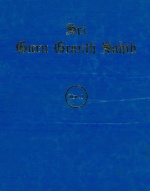
Dr Gopal Singh was responsible for completing the first complete translation of the Sri Guru Granth Sahib into English in 1960. It believed that initially it was published in 2 volumes although the present publications are published in a four volume set.
As the first English translation, it was very welcomed by non-Punjabi readers and received a wide distribution. The 'International Edition' published by the World Sikh University Press in 1978, has a light blue cover.
Dr. Gopal Singh's stellar reputation for scholarly work in service of the Dharma is well deserved. In fact, the introduction to the work, in the first of the four volumes, is a remarkable work in itself. Especially readable and worthwhile is Section II: On the Philosophy of Sikh Religion.
In this treatise on comparative religion, he traces the common threads of religious thought throughout the ages, giving one a deeper appreciation of Sikh Dharma. His brief explanation of the Kundalini and Yogic traditions is well-done. .....More
Contents: Top 300. 310. 320. 330. 340. 350. 360. 370. 380. 390.
359
Bhai Nand Lal (c. 1633-1713), was a poet famous in the Sikh tradition and favourite disciple of Guru Gobind Singh. His poetry, all in Persian except for Joti Bikas, which is in Punjabi, forms part of the approved Sikh canon and can be recited along with scriptural verse at Sikh religious divans.
Nand Lal adopted the pen-name of "Goya," though at places he has also subscribed himself as "Lal," the word being the last part of his name.
He was a scholar, learned in the traditional disciplines of the time, and his image in Sikh history is that of a man who loved and venerated Guru Gobind Singh and has been in turn loved and venerated by generations of Sikhs.
It is thought that he was born in a town called Ghazni in Afghanistan and was 23 years older than Guru Gobind Singh. By caste he was a Khatri, a class distinguished in Mughal times, like the Kayasthas, for its proficiency in learning and using Persian, which at that time was the language of official business. .....More
Contents: Top 300. 310. 320. 330. 340. 350. 360. 370. 380. 390.
360
Bhai Vir Singh (5 December, 1872 - 10 June, 1957) was a poet, scholar and theologian who was a major figure in the movement for the revival and renewal of Punjabi literary tradition.
His identification with all the important concerns of modern Sikhism was so complete that he came to be canonized as Bhai, the Brother of the Sikh Order, very early in his career. For his pioneering work in its several different genres, he is acknowledged as the creator of modern Punjabi literature.
Born on 5 December 1872, in Amritsar, Bhai Vir Singh was the eldest of Dr Charan Singh's three sons. The family traces its ancestry back to Diwan Kaura Mall (d. 1752), who rose to the position of vice-governor of Multan, under Nawab Mir Mu'ln ul-Mulk, With the title of Maharaja Bahadur.
Baba Kahn Singh (1788-1878) was, perhaps, the first in the family to become a Sikh. He became a recluse when he was still in his early teens and spent his entire youth in monasteries at Hardwar and then at Amritsar acquiring training in traditional Sikh learning. His mother's affection ultimately reclaimed him to the life of a householder at the age of 40, when he got married. Adept in versification in Sanskrit and Braj as well as in the oriental system of medicine, Baba Kahn Singh passed on his interests to his only son, Dr Charan Singh. .....More
Contents: Top 300. 310. 320. 330. 340. 350. 360. 370. 380. 390.
361
In 1986-87, I was posted as a Major, at an army outpost in the village of Segang-Menchukha, in the north western corner of West Siang District of Arunachal Pradesh, India.
One night I was woken up in the middle of the night by loud and persistent knocking at my door. “Who could it be at this time?” I wondered.
When I opened the door, I found it to be the village headman, locally known as 'Gaon Burha'. He was in an obvious state of distress and told me that his son was dying of a severe pain in his stomach and asked if I would send for a doctor.
I considered it fit to check the patient myself before I telephoned the doctor, who was some distance away and the track was quite hazardous. I decided to accompany Gaon Burha.
He led me to his wooden hut, which was divided into two, the portion in front was for cooking and at the rear was the living room where I found a young boy writhing in pain and crying.
As a precautionary measure, I had taken some pain-killing and Digene tablets with me, which I offered to the sick boy. .....More
Contents: Top 300. 310. 320. 330. 340. 350. 360. 370. 380. 390.
362
In 2008, we witnessed the mega events celebrating the tricentennial anniversary of the installation of the Guru Granth Sahib, held at Nanded in October 2008.
The Granth was installed as the perpetual Guru (spiritual guide) of the Sikhs by the last human-form Guru of the Sikhs, Guru Gobind Singh three hundred years ago in 1708.
With Nanded as the nucleus, the celebrations were organized at a global level in which almost every Sikh participated. Major processions originating from different parts of the Indian subcontinent poured into this holy city. The crowds that assembled on the occasion were indeed unprecedented and unmanageable.
The main function which ran over many days was attended by countless dignitaries including the President and the Prime Minister of India. The routes of the processions as well as the entire city were lavishly decorated. Illuminations marked the day, and every Sikh home lit up with candles or electric bulbs. .....More
Contents: Top 300. 310. 320. 330. 340. 350. 360. 370. 380. 390.
363
In this era of Kaljug, it may surprise many people and communities when Sikhs help build mosques for Muslims or temples for Hindus but this is a trait that has been endowed to Sikhs since the times of the Sikh Gurus many centuries ago.
The reaction of non-Sikhs to such deeds is surprising to many faithfully Sikhs.
A proud Sikh family of Sarwarpur, near Ludhiana, cannot understand what the fuss is about. Ever since Sajjan Singh Ghuman, an NRI Sikh living in England, rebuilt a mosque in his native village that was damaged during Partition, the shrine, as well as his family back home, have attracted the curiosity of outsiders.
"We never imagined we would be on a Punjabi TV channel just because my elder brother rebuilt this small mosque for the poor Muslim families of our village".
"For him, it was just a gesture towards restoring the collective heritage of our village,” says Sajjan’s brother, Joga Singh, who manages the family’s lands in Sarwarpur. Sure.
But what Joga and his family, or even the TV channel, do not know is that the sentiment that inspired his brother’s act is being manifested in scores of villages across Punjab .....More
Contents: Top 300. 310. 320. 330. 340. 350. 360. 370. 380. 390.
364
Squadron Leader Mahinder Singh Pujji was the last surviving fighter pilot from a group of 24 Indians who arrived in Britain in 1940; he was awarded the Distinguished Flying Cross for bravery.
An Indian pilot who flew Hawker Hurricanes during World War II has died, it has been announced. Squadron Leader Mahinder Singh Pujji, 92, who lived in Gravesend, Kent, UK died at at Darent Valley Hospital in Kent on Saturday following a stroke.
Sq Ldr Pujji, who learned to fly as a hobby in India, sailed to England after reading an advert in a newspaper. He warned his family he might never return. He began training in the autumn of 1940 and early the next year began flying Hurricanes protecting coastal convoys and intercepting bombers and fighters when Hitler ordered the bombing of London in the Blitz.
He survived several crashes and flew combat missions throughout the war in Britain, Europe, North Africa, the Middle East and Burma and was awarded the Distinguished Flying Cross. .....More
Contents: Top 300. 310. 320. 330. 340. 350. 360. 370. 380. 390.
365
Rehiras Sahib is the evening prayer of the Sikhs, which speaks of the greatness of Waheguru (the one God). As recorded in the Guru Granth Sahib, it contains the hymns of four different Gurus; Guru Nanak, Guru Amardas, Guru Ramdas and Guru Arjan Dev.
Now part of the Rehiras Sahib the Benti Chaupai, attributed to Guru Gobind Singh was added to the Bani in the late 19th century. The addition was later ratified by the supreme Sikh religious body - the Shiromani Gurudwara Prabandhak Committee.
Each section of the prayer casts light on another aspect of God. It is recited after a hard days work when one is tired out.
(about 16mins long; 1.9MB)
After returning home, washing up, and changing into more comfortable indoor clothing the family gathers together to recite this Bani. It adds energy to both the body and the mind allowing one to conclude their day giving thanks to the Almighty for the completion of another successful day.
The verse speaks of the greatness of Waheguru and the ways in which ones actions assists one in attaining spiritual enlightenment, liberating one's mind and soul. .....More
Contents: Top 300. 310. 320. 330. 340. 350. 360. 370. 380. 390.
366
If you are invited to a Sikh wedding, don’t panic!
This article gives a brief guide on what to expect, what you should wear and a feel of the ceremonies that will take place. Most Sikh weddings are great fun occasions and provided that you are properly prepared, it should be a great day out!
These weddings events are big, boisterous, chaotic events, with lots of twists and turns during the day, tons of food, lots of music and much energetic dancing. You'll have a hard time figuring out what's going on; just go with the flow of things and enjoy the events. As a guest you will be honoured by the family.
A wedding day will be a long eventful and exciting affair - so be prepared to start early and finish late. Have a good rest the previous day and be fresh and relaxed for the wedding day.
As a general rule the morning and early afternoon are taken up by the religious ceremony at the Sikh temple called the Gurdwara. While, these days the afternoon lunch is held at a different venue away from the Gurdwara. .....More
Contents: Top 300. 310. 320. 330. 340. 350. 360. 370. 380. 390.
367
Sant Baba Ranjit Singh Ji Dhadrianwale, is believed to have been born in July 1983 in Punjab, India. Since a very young age he has followed the path of Sikhi and has a deep understanding of the holy scriptures. Unlike many other educators of the Sikh masses, as a young person, he has tirelessly been doing a consistent and influential form of Sikhi Parchaar (preaching), predominantly centralized in the Punjab.
His message, in an effort to stop both young and older Sikhs from falling prey to the anti-Gurmat diseases of drug, alcohol and tobacco abuse, which are out of control in the state of Punjab, India. His message is simple, clear and delivered in the "sant-maata" (simple, basic) manner. The kirtan is not in the traditional classical raag form but in the simpler tradition of the sant tradition which has been practised in the sant-panth tradition by such strong figures as Sant Baba Nand Singh and Sant Baba Isher Singh.
Sant ji has a strong following due to the fact that his message is kept simple and delivered in language which the average person living in rural Punjab can understand and relate to. .....More
Contents: Top 300. 310. 320. 330. 340. 350. 360. 370. 380. 390.
368

Gurdwara: literally Guru's portal/ abode / House or Door. In the early period of Sikhism, before the advent of the word "Gurdwara", the word "Dharamsala" was used to refer to Sikh places of worship and service (Sewa). The word can be split into two: "Gur" or "Guru" referring to their Guru, Guru Granth Sahib i.e. Gurbani / Waheguru / the word Shabad and "duwara" meaning "Door" of the "House"
Although most Sikhs spell "Gurdwara" and refer it as the House of the Guru, that may not be the accurate spelling and meaning. If we look at the word "Gurdwara" closely in Gurmukhi, and compare it to each time it has been mentioned in the Sri Guru Granth Sahib or Bhai Gurdas ji's Vaars, there is no "vava" or "w" sound in it. The word is actually spelt "Gur-duara." The word Dwara means place or home, but Duara means 'through' or 'by means of'. So the accurate definition of a "Gurduara" would be through or by means of our Guru. For a Sikh, every thing is achieved by means or by grace of the Guru.
Sikhism, has no room for symbolism or ritualism; Sikhs have neither idols nor altars in their Gurdwara. They have no sacraments and no priestly order. .....More
Contents: Top 300. 310. 320. 330. 340. 350. 360. 370. 380. 390.
369
Gurdwara Garhi Sahib is situated at Chamkaur Sahib, Punjab, India. The place commemorates the spot of the bloody battle of Chamkaur.
After the attack at the river Sarsa, Guru Gobind Singh, his two eldest sons and 40 Sikhs made it to the town of Chamkaur while being pursued by an Mughal army of thousands. Guru Gobind Singh and the 40 Sikhs sought shelter in a mud-built double storey house. They were attacked by the Mughal enemy on December 21, 1705.
The Gurdwara Sahib is situated at Chamkaur Sahib in Ropar district and is connected by road to Ropar and Ludhiana-Chandigarh highway at Samrala and Morinda.
This location marks the site of the fortress like double storey house, with a high compound wall around it and only one entrance from the north, which was used by the Guru as a temporary citadel in the unequal battle of Chamkaur on 21-22 December, 1705. While occupying the house during the night of 21-22 December, Guruji ordered 8 Sikhs each to guard the four sides of the house. .....More
Contents: Top 300. 310. 320. 330. 340. 350. 360. 370. 380. 390.
370
The 300th celebration of the guruship of the holy Granth took place during 2007 to 2008. The Guru Maneyo Granth Jagriti Yatra (journey of awakening or enlightenment) of Shri Guru Granth Sahib started on 15th November 2007 from Takht Sachkhand Shri Hazoor Sahib.
15th November 2007 marked the beginning of the historical Jagriti (awakening) Yatra (journey). It lovingly showcased the shastars (weapons) of Sri Guru Gobind Singh ji Maharaj and Sri Shaheed (martyr) Singh along with puratan hast-likhit (historic hand-written) Sri Guru Granth Sahibji Maharaj. The yatra travelled to many places in India and the world. True to its name, the Jagriti Yatra created an awakening, imparting the message of One God and the importance of giving due priority to the welfare of the entire human race, irrespective of religion, colour, creed, status, caste, etc.
Since its beginning in 2007, the Yatra had been viewed by crowds in more than 100 cities throughout India — Orissa, West Bengal, Uttar Pardesh, Chattisgarh, Maharashtra, Madhya Pardesh, Himachal Pradesh, Jharkhand, Bihar, Uttar Pardesh, Uttarakhand, Haryana, Delhi and Punjab. Huge turnouts along the roadways have many times slowed the procession causing scheduled arrival times to be greatly delayed; but even the addition of pouring rains did not stemmed the crowds enthusiasm for these celebrations. .....More
Contents: Top 300. 310. 320. 330. 340. 350. 360. 370. 380. 390.
371
Ghorian, Khorian, Ghoreea (Gurmukhi: ਘੋੜੀਆ) or "The Wedding Procession Song" is a composition of hymns written by Guru Ram Das, in measure Vadahans, which are part of the Guru Granth Sahib and appear on pages 575 to 576 of the holy Granth. The word `ghorean` ਘੋੜੀਆ s in Punjabi is the plural form of ghoree ਘੋੜੀ s , a mare.
In Punjabi folk poetry, a type of lyrical songs which are sung on the occasion of marriage are called "ghoreea". A Punjabi marriage comprises a series of ceremonies performed at different stages. In one of these ceremonies the bridegroom mounts a handsomely caparisoned mare to go to the house of the bride where a reception awaits.
As the bridegroom climbs onto the back of the mare, his sisters feed the mare with crushed gram from a plate, embellish the bridle strings and sing the songs of ghori, as other girls and women join them in chorus. These songs eulogize the bridegroom and his ancestry and wish him a happy marriage. In the songs, the word "ghoree" (mare) occurs frequently, almost once in every verse.
Raga Vadahans in the Guru Granth Sahib incorporates hymns cast in the moulds of folk songs commonly sung at the time of birth, marriage and death. Guru Nanak has composed poems, in this raag, called "alahamanor dirges", songs of mourning. Guru Amar Das has also contributed to these hymns in the same style. Guru Ram Das, the Fourth Guru, has composed two "ghoreea" hymns, reminiscent of "ghoreea" of folk poetry. The folk forms meant for mundane occasions have been utilized by the Gurus to compose verses of spiritual reference and meaning. .....More
Contents: Top 300. 310. 320. 330. 340. 350. 360. 370. 380. 390.
372
KAM meaning "deep desire", "uncontrolled longing", "lust", "sensuality or lasciviousness" is considered one of the five cardinal sins or sinful traits in Sikhi. In common usage, the term stands for excessive passion especially for sexual pleasure and it is in this sense that it is considered an evil in Sikhism.
In Brahmanical literature kam is not always condemned. Kam as Kamadeva is a god in the Hindu pantheon comparable to Eros of Greek mythology and Cupid of the Romans, and is as such not contradictory to spiritual life.
Kam (gratification of desire) is in Hinduism is one of the four objectives (purusarthas) of human life, the other three being artha (acquirement of wealth), dharma (discharge of duty), and moksa (final emancipation). Jainism and Buddhism, which arose as protest movements against Brahmanical ritualism and superstition, however looked upon kam with horror. The Gurus rejected Brahmanical superstition as well as self-mortifying austerities.
In Sikhism Kam is not only unrestricted gratification of carnal desires, but also any urge or impulse which needs to be kept under check like other impulses and passions. Unrestrained tendency towards kam, especially sexual relationship outside the marital bond, is condemned in the strongest terms in Sikh code of conduct as well as in the holy Scripture. It is a destructive evil and a deadly sin. .....More
Contents: Top 300. 310. 320. 330. 340. 350. 360. 370. 380. 390.
373
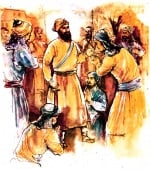
The word "Sahibzada" means "son" in Punjabi and is a term commonly used to refer to the 4 sons of Guru Gobind Singh, the tenth Sikh Guru. The word is a traditional word not used in the everyday language of today. The plural of the word is "Sahibzade" with a stretched "A" sound at the end.
The younger pair, called the "Chotta Sahibzade" (younger sons) were martyred together by the Mughals in Sirhind at the tender age of 6 and 9 years old. The older sahibzade, called the "Vaada Sahibzade" (older sons) died fighting the enemy of many thousands at the young age of 18 and 14 years old in battle at Chamkaur Sahib.
Char Sahibzade, ("char" means four and "sahibzade" refers to the sons or scions, young men of genteel birth) is a term endearingly used for the four sons of Guru Gobind Singh, (Nanak X) all of whom died as martyrs while still very young. Their names are reverently preserved in Sikh memory and are recalled every time Sikh ardas or prayer of supplication is recited at a congregation (sangat) or privately by an individual.
The martyrdom of the four sahibzade is an important part of Sikh history and the occasion of the martyrdom is remembered and commemorated with great vigour, by large numbers of Sikhs and very acute sadness every year on 21st and 26th of December by the Sikh Sangat (holy congregation). .....More
Contents: Top 300. 310. 320. 330. 340. 350. 360. 370. 380. 390.
374

Bhai Jivan Singh (13 December 1649 - 22 December, 1705) was the name given to "Bhai Jaita" after he had received the rites of initiation at the hands of Guru Gobind Singh on the day - 14 April, 1699 when the Khalsa was inaugurated. He was a Sikh from Patna, India who had belonged to the Majhabi (scavenger) caste.
He received initiation into Khalsa panth from Guru Gobind Singh who had previously given him the special honour by addressing him as "Ranghareta Guru Ka Beta" ("the young man of the Ranghar caste is the Guru's own son"). The Ranghar caste was a caste created for those born of a union between a Hindu and a Muslim. Both the children and their descendants were considered outcasts by the Hindus.
It was Bhai Jaita who had risked his life to recover and return the severed head of Guru Tegh Bahadur to the Guru for cremation. He had been sent to Delhi where he witnessed Guru Tegh Bahadur's beheading in Chandni Chowk on 24 November 1675.
He succeeded in evading the guards and escaping with the severed head of the ninth Guru to Anandpur where he was received with much honour by Guru Gobind Singh. .....More
Contents: Top 300. 310. 320. 330. 340. 350. 360. 370. 380. 390.
375
The manuscript of the Sikh Gurus' hymns contained in the Guru Granth Sahib were handed down by Guru Nanak to Guru Angad: by Guru Angad to Guru Amardas and by Guru Amardas to Guru Ramdas.
Guru Amardas compiled the first Granth (book) of the hymns. Guru Arjan Dev compiled the first edition of the Granth, called the Adi Granth. He started the preparation of the Granth in August, 1601, and completed it 3 years later in August, 1604.
The scribe of the Granth was Bhai Gurdas, an uncle of Guru Arjan. The place of compilation of the Granth is Ramsar (Amritsar). Guru Gobind Singh compiled the second edition of the Granth in 1706 at Damdama Sahib near Bhatinda, Punjab. The scribe was Bhai Mani Singh, a classmate of Guru Gobind Singh.
Guru Gobind Singh bestowed upon the Granth the Guruship at Nanded in 1708. Munshi Sant Singh, author of the Sikh history, composed the most popular verse in 1865 which a Sikh recites daily after his prayer. "All community should recognize Guru Granth as the Guru. All obey the commandments contained therein. Recognize the Granth as the visible body of the Guru. The Sikh who wishes to meet me should find me there."
Praise for the Guru has been part of Sikh history since the time of the first Guru. The Gurus did not praise themselves. They called themselves "humble servants of God" and worked in the service of mankind. .....More
Contents: Top 300. 310. 320. 330. 340. 350. 360. 370. 380. 390.
376
Benti Chaupai or Chaupai sahib is a prayer or Bani composed by the tenth Sikh Guru, Guru Gobind Singh. This Bani is one of the five Banis recited by the initiated Sikh every morning. It is also part of evening prayer of the Sikhs called the Rehras sahib.
Benti Chaupee is a composition that can be read at any time during the day to provide positivity, focus and elevated energy level. It is short composition which usually takes less than about 5 minutes to recite at a slow pace; it is written in simple Punjabi language and can be easily understood by most speakers of this language.
| ਹਮਰੀ ਕਰੋ ਹਾਥ ਦੈ ਰੱਛਾ ॥ ਪੂਰਨ ਹੋਇ ਚਿੱਤ ਕੀ ਇੱਛਾ ॥ |
| Hamri kro hath dai rahcha. Puran hoeh chit ki eecha. |
| Protect me O Lord with your own Hands; all the desires of my heart be fulfilled. |
Contents: Top 300. 310. 320. 330. 340. 350. 360. 370. 380. 390.
377
The Gurbani of the Guru Granth Sahib has a lot to say about the Lord of the Universe and His (or Her) creation.
God in Sikhism is a term used to denote any object of worship or evocation used to signify the belief of most modern religions in the existence of a "Supreme Being" or "Supreme Spirit" who is the source and support of the spatio-temporal material world.
Theologians remember Him by the name of God. The fundamental belief of Sikhism, too, is that God exists, not merely as an idea or concept, but as a "Real Being", indescribable yet not unknowable. The Sikh Masters, however, never theorized about proofs of the existence of God.
For them the Creator of all that exists is too real and obvious to need any logical proof. Guru Arjan, Nanak V, says, "God is beyond colour and form, yet His presence is clearly visible" (GG, 74), and again, "Nanak's Lord transcends the world as well as the scriptures of the east and the west, and yet he is clearly manifest" (GG, 397). .....More
Contents: Top 300. 310. 320. 330. 340. 350. 360. 370. 380. 390.
378
Nadir Shah's brutal offensives and the eight invasions by Ahmed Shah Abdali had made the Mughal Empire fragile and weak.
Sikhs had emerged as a strong and powerful force in northern India, and eventually halted Abdali's invasions. Under the leadership of Dal Khalsa chief, Sardar Jassa Singh Ahluwalia, the Sikhs refused an alliance, and instead challenged Abdali for battle.
They were anxious to avenge the killing of over 20,000 Sikhs, mostly women, children and old people, and also the destruction and desecration of the Golden Temple. Sensing defeat, Abdali called it a day, and finally returned to Afghanistan, never to come back again.
The vast area of the Indian subcontinent lying between the Indus and the Yamuna thus became free from foreign rule. With no enemy in the North, and Shah Alam II at the head of the decaying Mughal Empire at Delhi, the powerful 12 misls had a free run in increasing their influence in all directions, from the Indus to the Yamuna, seeking 'rakhi' (tribute, protection money) from various small chiefs, nawabs and rajas. .....More
Contents: Top 300. 310. 320. 330. 340. 350. 360. 370. 380. 390.
379
Harbhajan Singh Khalsa Yogiji (born as Harbhajan Singh Puri) (August 26, 1929 - October 6, 2004), also known as Yogi Bhajan and Siri Singh Sahib, was a charismatic and influential proponent of Kundalini Yoga and the Sikh Dharma.
He is best known as the spiritual director of the 3HO (Healthy, Happy, Holy Organization) Foundation, which today is one of the world's largest yoga-teaching bodies, and for his outspoken defense of the holistic doctrine of Sikh teachings.
Widely known as a master of Kundalini Yoga, he taught thousands of his students to be teachers and to spread his teachings.
Harbhajan Singh was born on August 26, 1929 into a Sikh family in Kot Harkarn, district Gujranwala, in the province of Punjab (British India). His father, Dr. Kartar Singh Puri, served the British Raj as a medical doctor. His mother was named Harkrishan Kaur. Theirs was a well-to-do landlord family, owning most of their village in the foothills of the Himalayas. .....More
Contents: Top 300. 310. 320. 330. 340. 350. 360. 370. 380. 390.
380
Bani (Punjabi (Punjabi: ਬਾਣੀ)), short for Gurbani (Punjabi (Punjabi: ਗਰਬਾਣੀ)), is the term used by Sikhs to refer to various sections of the Holy Text that appears in their several Holy Books.
The word Gurbani consists of two roots - Guru and Bani. The word "Guru" means "spiritual teacher" and here refers to the ten Gurus of Sikhism, the other Bhagats and writers whose writings can be found in the holy Guru Granth. The word "Bani" s refers to their utterances and writings. So the combined word "Gurbani" means the writings of the Gurus as found in the Sikh holy scriptures; the Gurus' words; the Gurus' teachings.
These Banis are also found in small Gutkas or Small Books containing sections of Gurbani. These Gutkas can vary from just a few pages to hundreds of pages and are used by Sikhs to refresh the text of the these Banis in their mind on a daily basis. The handy size of the Gutkas makes it easy to carry them in a coat pocket or purse. Although the Gutkas have to be treated with respect and care, the Sikhs do not accord the Gutkas the same reverence as the Sri Guru Granth Sahib their perpetual Guru, which is treated like a living Guru. .....More
Contents: Top 300. 310. 320. 330. 340. 350. 360. 370. 380. 390.
381
Gurdwara Rakab Ganj Sahib is an important historic Gurdwara in Delhi, India. It’s located at the exact spot where Dhan Sri Guru Tegh Bahadur's headless body was cremated after the Mughal executioner Jalaudin of Samana beheaded the ninth Guru of the Sikhs. Two brave Sikhs of the Guru, Bhai Lakhi Shah Banjara and his son, Bhai Naghaiya rescued the headless body of the revered ninth Sikh Guru from Chandni Chowk, Delhi after the execution of the Guru.
Guru ji's body was rescued by these two with a convoy of several ox-driven carts carrying bales of cotton and foodstuffs. Due to the strong dust storm, these brave Sikhs managed to lift the body of the Guru without the Guards discovering what was going on.
These two Sikhs were able to lift the body with great speed under the cover of the storm and then conceal the body in the cart under bales of cotton. They then quickly moved towards Raisina village, the place where they lived. To avoid any suspicion by the authorities Bhai Lakhi Shah Banjara placed the body on a bed and set fire to his whole house.
This place came to be known as Rakab Ganj. This tragedy took place on November 11, 1675 under orders of the Mughal Emperor Aurangzeb. Another devoted Sikh, Bhai Jaita took the Guru ji's head to Anandpur Sahib, 500Km (300 miles) away from Sis Ganj, Chandni Chowk. .....More
Contents: Top 300. 310. 320. 330. 340. 350. 360. 370. 380. 390.
382
In this article we look at the operation of making the food in the Guru-ka-Langar (the Guru kitchen) at the premier Sikh shrine, the Golden Temple, Amritsar.
On average forty to fifty thousand people take langar (or free meals) every day at Harmandar Sahib. Langar or community kitchen was designed to uphold the principle of equality between all people regardless of religion, caste, colour, creed, age, gender or social status as stipulated by the founder of Sikhism, Guru Nanak.
The Langar or free kitchen was started by the first Sikh Guru, Guru Nanak; in addition to the ideals of equality, the tradition of Langar expresses the ethics of ..sharing, community respect, inclusiveness and oneness of all humankind - ".....the Light of God is in all hearts." (sggs 282)
For the first time in human history, Guruji designed an institution in which all people would sit on the floor together, as equals, to eat the same simple food. It is here that all people high or low, rich or poor, male or female, all sit in the same pangat (literally "row" or "line") to share and enjoy the food together. .....More
Contents: Top 300. 310. 320. 330. 340. 350. 360. 370. 380. 390.
383
Wine, alcohol, recreational drugs (such as marijuana, heroin, cocaine, ecstasy, LSD, PCP) and other intoxicants (such as inhalants, gases, aerosols, or solvents, glue, etc) used with the intention of creating or enhancing recreational or religious experience are condemned by the Sikh Gurus.
Such users of drugs are wasting their lives on the planet by living in an illusionary state. The Guru supports the person who stays alert and aware, keeping themselves away from all types of intoxicants.
Gurbani states in the Guru Granth Sahib that "Those who do not use intoxicants are true; they dwell in the Court of the Lord.(1)" (SGGS p 15)
Drugs commonly considered capable of recreational use include alcohol and tobacco, and drugs within the scope of the United Nations Single Convention on Narcotic Drugs and Convention on Psychotropic Substances.
Psychopharmacologist Ronald K. Siegel refers to intoxication as the "fourth drive", arguing that the human instinct to seek mind-altering substances (psychoactive drugs) has so much force and persistence that it functions like the human desire to satisfy hunger, thirst and the need for shelter. .....More
Contents: Top 300. 310. 320. 330. 340. 350. 360. 370. 380. 390.
384
For a true Sikh who walks on the path of Dharam (righteousness), it is not permitted to wander around begging from others; the Guru tells us: "Those who walk in the Will of the True Guru, never wander begging (2)" (SGGS p 729).
The only begging should be from the Almighty Lord; Gurbani confirms, "Beg from the One Lord, the Great Giver, and you shall obtain your heart's desires. But if you beg from another, then you shall be shamed and destroyed" (SGGS p 590).
So never go asking for donations from anyone; ask and do ardas to the Almighty and if He desires, your needs in this respect will be fulfilled; if not, then don't waste your times begging elsewhere; live in His hukam; make every effort to do good but only have ultimate faith in the One Lord!
Further, if any wandering ascetic or recluse goes around begging, the Guru tells us not "to touch his or her feet" ie: do not entertain them as spiritual teachers. The Guru tells us clearly, "One who calls himself a guru or a spiritual teacher, while he goes around begging - don't ever touch his feet" (SGGS p 1245). .....More
Contents: Top 300. 310. 320. 330. 340. 350. 360. 370. 380. 390.
385
Gurdwara Bangla Sahib is situated in the heart of New Delhi's famous Connaught Place. It is located on the eastern side of the intersection of Ashok Road and Baba Kharag Singh Marg.
Originally this place was the bungalow (haveli) of Mirza Raja Jai Singh, hence the name Bangla Sahib. It's original name was Jaisinghpura Palace. A Rajput, Mirza Raja Jai Singh, was one of Mughal emperor Aurangzeb's most important military leaders and a trusted member of his Darbar (Court).
After the passing away of Guru Har Rai the seventh Sikh Guru, Ram Rai who was the eldest son of the seventh Master and his masands instigated Mughal Emperor Aurangzeb to issue a decree summoning Guru Harkrishan to his court. Ram Rai was elder brother of Guru Harkrishan.
Guru Harkrishan decided to go to Delhi since he felt that the "sangat", his followers had been misguided and he saw an opportunity in this to clear their misunderstandings. Meanwhile Sikhs of Delhi approached Mirza Raja Jai Singh, a strong devotee of Sikh Gurus to prevent any harm coming to Guru Harkrishan either by Aurangzeb or by the masands of Ram Rai. .....More
Contents: Top 300. 310. 320. 330. 340. 350. 360. 370. 380. 390.
386
SOBHA SINGH (29 November 1901 - 21 August 1986), famous Sikh painter, well known especially for his portraits of the Sikh Gurus, was born on 29 November 1901 in a Ramgarhia family of Sri Hargobindpur, in Gurdaspur district of the Punjab. His father, Deva Singh, had been in the Indian cavalry.
In 1905, when he was only 4 years old, his mother Bibi Acchran died and some 12 years later, when he was about 16, his father S. Deva Singh died in 1917. At the age of 15, Sobha Singh entered the Industrial School at Amritsar for a one year course in art and craft. It is said that in 1919 he was present in Jalianwala Bagh at the time of firing.
As a draughtsman in the Indian army he served in Baghdad, in Mesopotamia (now Iraq). On coming back from Baghdad, he married Inder Kaur. Whatever amount he had been sending to his sister from overseas, she had not saved anything out of it for him. They had a real hard beginning due to the stringency of money.
He left the army in 1923 to pursue an independent career in drawing and painting, initially in Amritsar at Bazar Mai Sewan. .....More
Contents: Top 300. 310. 320. 330. 340. 350. 360. 370. 380. 390.
387
In one of his compositions Guru Nanak said, “As long as we are in this world, we should listen to others and say something to them”. This is the basic principle of dialogue, of exchange of opinions or ideas.
During his four lengthy journeys to the east, south, north and west, he opened a dialogue with all the existing faiths, not in today’s empirical or utilitarian language, but in ethical and spiritual language capable of expressing human realities and spiritual values.
He filled the inter-religious space with love, ethical humanism and spirituality. He approached every religion as his own and presented his own faith and philosophy as everyone’s religion, in the crucible of eternal Truth.
He travelled to various centres of religious pilgrimage. His dialogue with pandits, sadhus and yogis of every sect, as with mullas, pirs and kazis continued throughout his life. He visited the places of pilgrimage of Kurukshetra, Mathura, Haridwar, Benaras, Gaya as well as those in Bengal, Assam and Sri Lanka. .....More
Contents: Top 300. 310. 320. 330. 340. 350. 360. 370. 380. 390.
388
In the 15th century Sir Nicholas Bacon, a member of Corpus Christi College Cambridge gave modern science its first born son, in the days when Elizabethan England flourished at its peak.
When that son Francis Bacon (1561 – 1626), a member of Trinity College Cambridge became Lord Chancellor, the highest law officer in England, he was already recognised as a philosopher. He was endowed with the wisdom of universal thought. He then laid the foundation of modern science.
The great Renaissance of learning began with Roger Bacon (1214–1294) in the 13th century. The torch of genius was then taken up by Leonardo da Vinci (1452 – 1519). It was thrown into the sky by Galileo (1564 – 1642) and Copernicus (1473 – 1543). Christopher Columbus (1451 – 1506) had entered the far horizons of one of the world's mighty oceans.
At about the same time Guru Nanak (1469 AD) who founded the Sikh religion, was doing the same and more in the sub continent. On the science front, Nanak told us the distance to the moon which is exactly what the scientists tell us today. He also disclosed that there are universes upon universes, and spheres upon spheres and many planets had existence like ours. .....More
Contents: Top 300. 310. 320. 330. 340. 350. 360. 370. 380. 390.
389
Baba Buddha ji (6 October 1506 - 8 September 1631), one of the most venerated, primal figures of early Sikhism, was born on 6 October 1506 at the village of Katthu Nangal, 18 km north east of Amritsar.
After sometime the family settled down in Dhalla village not far away from river Ravi opposite Kartarpur. Bura, as he was originally named, was the only son of Bhai Suggha, a Jatt of Randhava clan, and Mai Gauran, born into a Sandhu family.
Bhai Budha occupies a unique position in Sikh history. He applied the tilak of guruship to five Gurus, saw seven Gurus and remained in close association with first six Sikh Gurus from 1521 to 1631 for over one hundred years. He was the first priest of Harimandir Sahib, and laid the foundations of Dera Baba Nanak and most of the holy buildings at Amritsar.
As a small boy, he was one day grazing cattle outside the village when, in 1524 A.D, Guru Nanak happened to pass by his village. According to Bhai Mani Singh, Sikhan di Bhagat Mala, Bura went up to him and, making obeisance with a bowl of milk as his offering, .....More
Contents: Top 300. 310. 320. 330. 340. 350. 360. 370. 380. 390.
390
Guru Nanak taught us the importance of caring and loving communities. He promoted and encouraged their birth and establishment.
He advocated the concept of fellowship; of closeness and affection between individuals; of non-discrimination and fairness among all societies. The Guru highlighted the importance of openness and transparency; of caring for others; of protecting and guardianship; of loving all.
These values are paramount to Sikhi and necessary for a rewarding and fruitful spiritual life.
The Guru helped to established many communities where the principles of caring, of community cohesion, of kindness and forgiveness, of sharing and respect for all were strongly emphasised. The fact that we all belong to the one same God, the Creator, Sustainer and the Destroyer is the root and the primary message of the Guru Granth, the Sikh holy scripture.
The code of behaviour and self-discipline of the individual was the first step - to have control over ones own vices and to establish ones virtues; .....More
Contents: Top 300. 310. 320. 330. 340. 350. 360. 370. 380. 390.
391
Gurdwara Moti Bagh Sahib is situated on the Ring Road (Mahatma Gandhi Marg) in Delhi city between Dhaula Kuan and RK Puram (Shanti Path) south of the intersection with National Highway 8.
Once Guru Gobind Singh ji camped at this site with his army. Earlier it was known as Mochi Bagh and later the name was changed to Moti Bagh.
An old story relates that the Guru, an accomplished archer, shot two arrows from a colony of cobblers in Moti Bagh which hit the 'Divan' (throne or bed) of Prince Muazzam (later Bahadur Shah).
The Guru's first arrow announced his arrival in Delhi and the second arrow carried a chit saying, "It is not magic but skill of archery". Bahadur Shah was said to be sitting in the Red fort at the time. Seeing the arrow strike, Bahadur Shah took this as a miracle.
The story continues that a second arrow landed in the Divan's left foot with a note (chit) pointing out that .....More
Contents: Top 300. 310. 320. 330. 340. 350. 360. 370. 380. 390.
392
In India before the advent of Guru Nanak, the life of the ascetic or recluse was regarded as the best way to connect to God.
However, Guru Nanak changed that by saying that the life of the householder - the "spiritual path of the householder" or "Grist Marg" was the preferred route to attain the highest level of spirituality in this era of Kaljug.
Guru Nanak taught that the ideal householder's life is spent in selflessly carrying out one's duties to family and society while at all times remembering God and serving His saints; engaged in gainful labour one is to nurture ones family; take care of the local community and protect the weak.
Sikhism is a monotheistic faith, which teaches that there is only one God; that is not subject to time or space; that is the Creator, Sustainer and Destroyer of the Universe and everything in it.
Moreover in Sikhism, ethics vales and religion go hand in hand. The inculcation of moral qualities and the practice of virtue in everyday life is a vital step towards spiritual development. .....More
Contents: Top 300. 310. 320. 330. 340. 350. 360. 370. 380. 390.
393
The Sikh Guru tells us very clearly that speaking lies is wrong and will lead the person away from God; he or she will not find peace or solace and the result will only be continuous misery and sadness.
The motivation of telling lies is greed; the person speaking lies has some gain at the back of their mind; it may just be done for a laugh but whatever the motivation, the Guru says that greed is the spark that leads one to lie.
The Guru says, "What can anyone do, with greed within? O Siblings of Destiny, by telling lies, they eat poison.(4)" (SGGS p 635) The greed within results in the person succumbing to the temptation to lie and satisfy this inner need.
The Guru compares the telling of lies to the "...eating of poison". This is repeated many times. On page 948 of the holy Granth, the Guru tells us "Speaking lies, one eats poison; the self-willed manmukh departs, crying out in pain" (SGGS p 948). Again "speaking lies one eats poison" is repeated. .....More
Contents: Top 300. 310. 320. 330. 340. 350. 360. 370. 380. 390.
394
Sikhism does not give the right of divorce to its adherents except in extreme circumstances, and even then since it is not legislated within Sikhism this is decided by Western, Hindu, Muslim or other courts.
The Guru Granth Sahib does not specify a word for 'divorce' and this act is not considered in the holy Granth; apart from the word 'chhutee' (Gurmukhi: ਛੂਟੀ) which means 'released' or 'escaped' no other word is specified for this act of separation. In English we have the word 'divorce'; in Urdu we have 'Talaak'; in Spanish we have 'divorcio', etc.
Many Sikh sources mention the difficulty of divorce in the Sikh tradition; some quotes from Sikhs are as follows:- “In the case of broken marriage, divorce is not possible according to the Sikh religious tradition. The couple can, however, obtain a divorce under the Civil law of the land.”
Anand Karaj (Punjabi: ਅਨੰਦ ਕਾਰਜ, anand kĝraj) is the name given to the Sikh wedding ceremony, literally translated as "Blissful Event". Sikhs regard marriage as a sacred bond of mutual dependence between a man and a woman. .....More
Contents: Top 300. 310. 320. 330. 340. 350. 360. 370. 380. 390.
395
Bhai Sahib Bhai Mohinder Singh was born on 31 March 1939 and is the mukhi-Sewadar (the main volunteer) of the Sikh organisation called Guru Nanak Nishkam Sewak Jatha, which has its head office in Birmingham, UK.
He has been linked to this organisation since 1974 when he met the founder and spiritual inspiration of the organisation, Sant Baba Puran Singh ji, Kericho-wala in Kenya.
Bhai sahib spent most of his childhood in East Africa; with most of his secondary education in Nairobi, Kenya. At an early age, Bhai sahib's mother passed away. Bhai sahib has such fond memory of his mother and the difficult time surrounding the sudden death of his mother.
Bhai sahib's father re-married and a stable family environment was re-established; he excelled in his studies going to the top schools in Nairobi; further university education was undertaken in the UK.
It was in 1995 that Bhai Sahib was called to take on the responsibilities of this Jatha (organisation) when Bhai Norang Singh passed away. His first main task was to successfully complete the UK sangat's project of re-gilding the Sri Harimandir Sahib. Since those times, with Bhai sahib's energy and dedication and Waheguru's kirpa, the global Sikh Sangat and Jatha together have completed many important projects for the Sikh Panth (Sikh Global Society). .....More
Contents: Top 300. 310. 320. 330. 340. 350. 360. 370. 380. 390.
396
In a life that is busy and prone to many difficulties, much pain and riddled with many personal challenges it seems impossible to worry about others. One has to worry about oneself; there is debt to pay off; outstanding bills that need to be paid urgently.
What happens if you suffer health problems; how will you cope? How are you going to balance your budget? What if the interest rate goes up again? There are so many hurdles that need to be crossed to get to a level playing field; will I ever get there?
In a recent survey, over 50% of Americans said they worry about the money they owe; many said that they worry about their overall debts most of the time. These debts can come from home and car loans as well as credit cards; 75% in the poll said they have credit cards; 40% of those with credit cards said they will use plastic to help pay for their holiday spending that year. Debt and money problems are highlighted in many surveys across the world.
With so much personal stress and pressure, the idea of helping others is difficult to accept. However, Gurbani warns us, "O Nanak, how shall I tell them this? Without the karma of good deeds, they are only destroying themselves (1)" (SGGS p 147). The wise Guru tells us that without doing good deeds we are digging a large hole for ourselves.
Gurbani reminds us that it is only the good deeds and actions that will remain with us and will be counted in the end; the pleasures and enjoyments of life here on Earth will mean nothing. .....More
Contents: Top 300. 310. 320. 330. 340. 350. 360. 370. 380. 390.
397
Swami Ram Tirath Dandi Sanyasi (aka Ram Tirath Singh) (31 August 1897 - 12 May 1977) was born in Brahmin family at Tohra village in Patiala, Punjab India.
He was a Hindu theologian, Sanskrit scholar and an expert in the Vedas, Puranas and Simrities (ancient Hindu scriptures).
In his later years, he became the author of the publications "Supreme Scriptures, Sri Guru Granth Sahib" and "Paramount Religion, Khalsa Panth"; both originally written in Hindi but subsequently translated into Punjabi and English.
He was a recluse who after a prolonged spiritual quest turned to the Guru Granth Sahib. Born on 31 August 1897 to Pundit Balak Ram and Hari Devi, a Gaur Brahman family of the village of Tohra, in the then princely state of Nabha, he received the name of Ram Pratap but was rechristened Swami Ram Tirath by Swami Narayan Tirath, an ex-Principal of Queens College at Calcutta, who initiated him into sannyasi {recluse) order in 1937.
For his early education. Ram Tirath was apprenticed to a Pandit in Nabha from where he moved to Patiala .....More
Contents: Top 300. 310. 320. 330. 340. 350. 360. 370. 380. 390.
398
The 'family' is the basic 'atomic' structure and essential social unit in Sikhism; it is the common unit which collective forms communities. The family is the strong and noble Sikh core institution which has been promoted since the time of Guru Nanak.
It was this social unit which was most important for all the Sikh Gurus who preached the 'life of a house-holder' rather than the 'life of renunciation' which was prevalent in other cultures of the time. All the Sikh Gurus were members of the 'family unit'; all adult Sikh Gurus were married while the eighth Sikh Guru, Guru Harkrishan was a 'bala' or "child Guru".
The Gurus believed that the family unit through procreation ensures the continuation and existence of healthy societies; without the 'family unit' there is risk to the future of secure societies. In addition, the family has economic and educational functions to perform; so when family life runs in a smooth and happy manner, it creates a strong engine where societies and communities can prosper and flourish in a safe and secure environment. A strong 'family unit system' ensures a successful biological, economical and spiritual future of human societies! .....More
Contents: Top 300. 310. 320. 330. 340. 350. 360. 370. 380. 390.
399
The Sikh religion has various established beliefs and values that are inherent in the basic philosophy of the faith. A Sikh's primary belief is in only one supreme God – This sole God is the same for all the peoples of the Universe.
Guru Arjan, the fifth Sikh Guru highlights this point by saying in the Sikh holy text called the Guru Granth Sahib, "There is only the One Supreme Lord God; there is no other at all" (SGGS p 45); this belief is the starting point of the Sikh faith.
Next, God is considered gender neutral in Sikhism. So when a Sikh refers to "God", this God can be referred to as masculine or feminine; so God can be called ‘He’ or ‘She’. Guru Arjan reinforces this concept by saying: "You are my Father and You are my Mother.....You are my Protector everywhere...." (SGGS p 103).
Further, this one God is the same God of the Sikhs, Hindus, Muslims, Christians, Jews, etc – of all the peoples of the world; everyone in this world belongs to that same one God! Guru Ram Das, the fourth Sikh Guru explains: "All living beings are Yours - You are the Giver of all souls" (SGGS p 10). .....More
Contents: Top 300. 310. 320. 330. 340. 350. 360. 370. 380. 390.
